Frank F. Weber's Blog, page 18
May 7, 2018
Reservations about Reservations
 This blog is a criticism of reservations and not of Native Americans. As the owner of CORE Professional Services, which is a fairly large central Minnesota employer, 7% of our employees are Native American and they are all outstanding professionals. (In a state where 1.1% of the population is Native American.)
This blog is a criticism of reservations and not of Native Americans. As the owner of CORE Professional Services, which is a fairly large central Minnesota employer, 7% of our employees are Native American and they are all outstanding professionals. (In a state where 1.1% of the population is Native American.)Native American reservations are the greatest failure of American efforts with a culture I can think of. The poorest place in the United States with a population over 1000 is Blackwater Reservation in Arizona. The poorest place of any size in the United States is Pine Ridge Reservation in South Dakota. People hoped that casinos would greatly improve life on reservations. The reality is legal gambling has brought more problems than solutions, including corruption, gangs and drug trafficking. Plus, prosecution on reservations is complicated by the fact that you need to determine the race of the participants to resolve the issue. An assault could fall under 4 different investigative jurisdictions:
If a Native assaults another Native on a reservation, it is investigated by the tribal police and goes to tribal court. If a non-Native assaults a non-Native on a reservation (for example a fight at a casino), it is investigated by the state and goes through the county and state court system.If a non-Native assaults a Native on a reservation, the FBI has jurisdiction and the case goes to federal court. Oddly enough, 2 reservations (Mille Lacs and White Earth) have developed what is called “assumption” jurisdiction, allowing both the state and federal agents to investigate.
The average life expectancy of Native Americans who live on reservations is 48 for men and 52 for women. The average life expectancy for Native Americans who do not live on reservations is the same as everyone else in the United States—78. Living on a reservation basically takes 30 years off your life. When people talk about growing up in rural Minnesota, or parts of the Twin Cities, you hear people say, “You’re lucky you grew up there.” I’ve never heard anyone say that about reservations.
A mistake some reservations make is focusing primarily on hiring teachers of Native American ancestry. Data from The Department of Education indicates that Native Americans are the group least likely to graduate from college. If you limit your choices to the smallest number of applicants, you’re less likely to get the best teachers. If you don’t have the best teachers, you will always be the group least likely to graduate from college. The culture could be preserved by having Native spiritual leaders teach in every school, while still pursuing the best teachers (regardless of race). When you look at the data, Asian American families are obviously doing something right, in a society where there is a direct correlation between income and years of education. Asian Americans are also the highest income group in the United States. I tell people you get what you emphasize. For the most part, you don’t find Asian Americans in Hockey or the NFL or the NBA, you do find them successful in every academic field.
% of Americans ages 25-29 who have college degrees by group
Asian American 68.9%
European American 54.0%
Females 50.1%
Males 41.3%
Mixed race 38.4%
African American 31.1%
Mexican American 25.7%
Pacific Islander 24.9%
Native American 22.3%
May 5 marked the National Day of Awareness for Missing and Murdered Indigenous Women and Girls. Here are some statistics from the Indian Law Resource Center: In the United States, violence against indigenous women has reached unprecedented levels on tribal lands. More than 4 in 5 American Indian women have experienced violence, and more than 1 in 2 have experienced sexual violence. Alaska Native women continue to suffer the highest rate of forcible sexual assault and have reported rates of domestic violence up to 10 times higher than in the rest of the United States. The suicide for American Indian girls is 3 times the national average. On some reservations, indigenous women are murdered at more than 10 times the national average. Although the Violence Against Women Reauthorization Act of 2013 and the Tribal Law and Order Act have helped bring attention to the high rates of violence against Native women, there is still no reliable way of knowing how many Native women go missing each year. In 2016, North Dakota alone had 125 cases of missing Native women reported to the National Crime Information Center (NCIC), compared to 5,712 total Native women cases reported in the United States. However, the actual number is likely much higher, as cases of missing Native women are often under-reported and the data has never been officially collected.
Only 22% of Native Americans live on reservations nationally. The impact for those who do is concerning. A 2009-2012 study by Colorado State University found 56.2 percent of American Indian 8th graders and 61.4 percent of those in 10th grade had used marijuana, compared to 16.4 percent of 8th graders and 33.4 percent of 10th graders of non-Natives. American Indian students’ annual heroin and Oxycontin use was about 2 to 3 times higher than the national average. Several early childhood interventions, such as the Nurse-Family Partnership, have been shown to effectively (and cost-effectively) reduce adolescent drug use and related problems in disadvantaged communities by targeting risk and protective factors as early as the prenatal period and infancy. Early intervention is crucial in preventing another generation from being lost to substance abuse and addiction. But keep in mind that even though the rates of substance abuse for Native Americans is higher than other groups, at 12%, most Native Americans do not abuse substances.
The information below, up to the picture of the grave marker, was taken from an article in the Washington Post on Pine Ridge Reservation in South Dakota.
Clarence Broken Rope walks in front of the house where he grew up in Allen, SD. He now lives with an aunt not far away. “This guy, he killed himself in a car accident,” Clarence said, pointing to the grave of a 25-year-old next to the grave of a 21-year-old who also died in that accident. “He was drunk.” This is Desmond Poor Bear, the one who got shot by police,” he said of a mound of fresh dirt with a marker: 4-17-82 to 7-29-09. “He was drunk, and he had a knife. Not too many people die of old age here,” he said. “I have a cousin who is in the process of crossing over. He was just telling us, ‘I’m going to go out. I’m going to kill myself.’” And he did, in the slowest way possible, Clarence said. “He stayed drunk for months on end, week after week,” he said. “He never did eat. He didn’t care to shower. Now he’s got full blown cirrhosis. His body is all orange. We’re preparing ourselves now for his journey.”
“How old is he?” I asked.
“He’s 30” he said. "I never thought I’d actually live to be 23,” he added. "And now that you have? Do you think you’ll live to be 50, 60, maybe 80? " "I wouldn’t say 50. My guess 40,” he said.
Just that morning, Michael and I had been in a very different place. We were in Belle Fourche, SD, watching a mom and dad unload their children from a minivan and race toward an American flag in the middle of a field. It marks the exact center of the nation and tourists flock to the spot, from near and far, just to say they did it.
 Michael and Nicole Mach lift 1-year-old Bejamin over a barbwire fence that separates the road from a spot marking the center of the nation. Photo by Michael Williamson/The Washington Post. Their three children, ages 1, 3 and 9, ran through the yellowed grass around the flag, laughing. “It’s hard to count the stars when they’re moving,” the oldest, Allison, told her father, out of breath.
Michael and Nicole Mach lift 1-year-old Bejamin over a barbwire fence that separates the road from a spot marking the center of the nation. Photo by Michael Williamson/The Washington Post. Their three children, ages 1, 3 and 9, ran through the yellowed grass around the flag, laughing. “It’s hard to count the stars when they’re moving,” the oldest, Allison, told her father, out of breath.  The Mach family stand at the center of the nation in Belle Fourche, SD. Photo by Michael Williamson/The Washington Post. That was only four hours away from Allen, just enough time for morning to turn into the afternoon, but it so felt so distant by the time Michael and I arrived on the reservation. The streets were empty and houses were quiet. Many buildings were tattooed with the word, “A-town,” the mark of a local gang. Nancy Broken Rope said, “Everyday I worry. Everyday,” she said. “The only thing that helps is a little prayer.”
The Mach family stand at the center of the nation in Belle Fourche, SD. Photo by Michael Williamson/The Washington Post. That was only four hours away from Allen, just enough time for morning to turn into the afternoon, but it so felt so distant by the time Michael and I arrived on the reservation. The streets were empty and houses were quiet. Many buildings were tattooed with the word, “A-town,” the mark of a local gang. Nancy Broken Rope said, “Everyday I worry. Everyday,” she said. “The only thing that helps is a little prayer.”  Nancy Broken Rope rocks her grandson LeAndre Williams. Photo by Michael Williamson/The Washington Post. To find work in the past, she’s had to leave the area because there are no jobs locally, she said. Both said they had come back to Allen because it’s their home, it is the life they know best. Nancy couldn't afford a house anywhere else and didn't want to lose the one she already had. Clarence said he came back in part because he is his mother’s “only bull,” meaning only son, and that it's his responsibility to take care of her. But, he said, he knows the risk of staying.
Nancy Broken Rope rocks her grandson LeAndre Williams. Photo by Michael Williamson/The Washington Post. To find work in the past, she’s had to leave the area because there are no jobs locally, she said. Both said they had come back to Allen because it’s their home, it is the life they know best. Nancy couldn't afford a house anywhere else and didn't want to lose the one she already had. Clarence said he came back in part because he is his mother’s “only bull,” meaning only son, and that it's his responsibility to take care of her. But, he said, he knows the risk of staying.  After his first suicide attempt, Clarence said he sobered up and sold the gun for $250. But a year later, he tried again. After a girlfriend broke up with him, he said he swallowed half a container of pills and had to be taken to the hospital by a friend. “This type of life, you got to be strong to live it,” he said. "It’s different from the city because out here there ain’t no mobility, no income really…Around here, it’s basically not having a job that’s driving us crazy.”
After his first suicide attempt, Clarence said he sobered up and sold the gun for $250. But a year later, he tried again. After a girlfriend broke up with him, he said he swallowed half a container of pills and had to be taken to the hospital by a friend. “This type of life, you got to be strong to live it,” he said. "It’s different from the city because out here there ain’t no mobility, no income really…Around here, it’s basically not having a job that’s driving us crazy.”  A contributing cause of poverty on the reservations are the lack of commercial businesses, which limits the number of local available jobs. Photo by Michael Williamson/The Washington Post. We found a group of boys, ranging in age from 11 to 15, swimming in a watering hole. They jumped and laughed and threw rocks at teenage girls who tried to approach. It was a picture of innocence, until we talked to them. Most had started drinking when they were 9 years old and had started smoking marijuana not long after that. Several told of having problems in school or not caring about it at all. One boy asked if we had food stamps to give him.
A contributing cause of poverty on the reservations are the lack of commercial businesses, which limits the number of local available jobs. Photo by Michael Williamson/The Washington Post. We found a group of boys, ranging in age from 11 to 15, swimming in a watering hole. They jumped and laughed and threw rocks at teenage girls who tried to approach. It was a picture of innocence, until we talked to them. Most had started drinking when they were 9 years old and had started smoking marijuana not long after that. Several told of having problems in school or not caring about it at all. One boy asked if we had food stamps to give him.  A group of boys swim at the Rosebud Dam. Photo by Michael Williamson/The Washington Post. “You know what these are?” a 14-year-old asked me, holding up a pair of brass knuckles. He wasn’t saying it in a threatening manner, just showing that he could protect himself and the other boys if he needed to. One of our friends just passed away a few days ago,” one of the boys said. “He stole an SUV and lost control.” He was 11 years old. “That’s why it sucks over here,” the boy said. They pointed us in the direction of a dirt road that they would pass on their way home and where a small white cross was surrounded by white roses, a toy truck, two apples and four cigarettes.
A group of boys swim at the Rosebud Dam. Photo by Michael Williamson/The Washington Post. “You know what these are?” a 14-year-old asked me, holding up a pair of brass knuckles. He wasn’t saying it in a threatening manner, just showing that he could protect himself and the other boys if he needed to. One of our friends just passed away a few days ago,” one of the boys said. “He stole an SUV and lost control.” He was 11 years old. “That’s why it sucks over here,” the boy said. They pointed us in the direction of a dirt road that they would pass on their way home and where a small white cross was surrounded by white roses, a toy truck, two apples and four cigarettes. 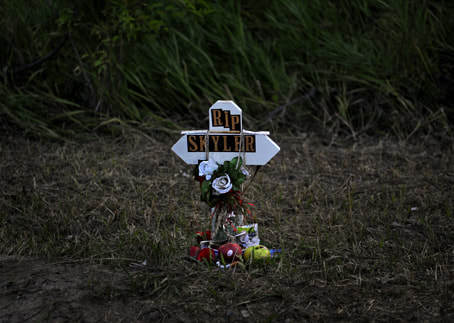 A memorial for an 11-year-old who died on the dirt road that his friends pass on their way home from the Rosebud Dam. Photo by Michael Williamson/The Washington Post How did we get here?
A memorial for an 11-year-old who died on the dirt road that his friends pass on their way home from the Rosebud Dam. Photo by Michael Williamson/The Washington Post How did we get here? It started with crazy thinkers like Andrew Jackson who were convinced that we couldn’t peacefully coexist. Jackson made it a mission to chase Natives out of the 13 colonies and his forces had the power to do it, because they had better weapons. Jackson was a hypocrite. He grew up in harsh conditions as the youngest in a family that had been taken prisoner by the British in the revolutionary war. His parents and older siblings died either during their incarceration or as a result of their illnesses and injuries they incurred during their incarceration. Later, when Jackson led his force to wipe out Indians who had attacked a village, the only survivor was an Indian baby. When asked by a soldier if the baby should be killed, since the baby’s parents were both dead, Jackson responded, “No. That baby is just like me. I will raise him.” The child lived with Jackson as his son, even in the White House when Jackson became president, but unfortunately died of an illness at age 9. Abraham Lincoln was a great president who listened to others. During a conversation with former slave Frederick Douglas, Lincoln proposed creating a free black state. Douglas told him it would be a disaster, as blacks would be given the worst places to live and there would be no business. Lincoln agreed that Douglas was right. We needed to coexist. And then later, we made the very mistake Lincoln avoided, with Native Americans.
Suggestions:
We need to start developing a no tolerance of abuse attitude toward Native Americans similar to the “Me Too” movement. We have movies, like Wind River, that bring attention to assaults on Native Americans by white men. I have my own experience of completing assessments on Native American women and girls who have been assaulted on reservations by Native American men. In one case, a 15-year-old girl was sexually assaulted by 3 men and her body was cut down her side with a broken beer bottle. The assault was reported to the Tribal Police, along with the names of the offenders, and no one was prosecuted. I would like to see people of all races work together to resolve this problem. I don’t feel the answer is leaving it completely with the Tribal Police, or having it investigated by an all-white force.
Since reservations (with casinos) offer cash payments, how about making academic success an incentive, with standardized testing to mark learning? How about investing casino money into tutors at every grade level to help students' progress? How about investing money into education on conservation and Native culture? Mille Lacs Lake could be an area people come to learn about Native culture, and fish, from all over the world. Instead it’s referred to as the “Dead Sea” because it’s been over-netted for years. In my readings of Native life, I haven’t read anywhere that wiping out a natural resource was part of the culture. There are solutions. Step 1. We need to stop ignoring the problem. Step 2. Begin giving more attention to Native achievements. Step 3. We need to work together!
Reservations also need exactly what’s needed in inner cities. Legitimate opportunities for the average person. Forbes magazine suggested the solution is allowing American Indians private ownership of the land and of their homes. The vast majority of land on reservations is held communally. That means residents can’t get clear title to the land where their home sits, which is a reason for the abundance of mobile homes on reservations. This makes it hard for Native Americans to establish credit and borrow money to improve their homes because they can’t use the land as collateral--and investing in something you don’t own doesn’t make sense.
This leads to what economists call the tragedy of the commons: If everyone owns the land, no one does. So the result is substandard housing and a communal rundown look that comes from a lack of investment, overuse and environmental degradation. It’s a look that’s common worldwide, wherever secure property rights are lacking—much of Africa and South America, inner city housing projects, rent-controlled apartment buildings in the U.S., and Indian reservations.
Quotes:
Cigarettes are the only product if used correctly, kill the customer. George Carlin
I completely understand the complaints of 2nd hand smoke. (Fact: 25% of nicotine goes in the smoker and 75% goes in the air around the smoker.) It’s sort of like having someone sit at a table and throw anthrax in the air. George Carlin
Our capacity for friendship is God’s way of apologizing for our families. Jay McInerney
To lose one parent may be regarded as misfortune, but to lose two parents, is simply carelessness. Oscar Wilde
Thanks for listening,
Frank Over 30 tractors rolled in on Pierz High School's annual drive your tractor to school day.





















Published on May 07, 2018 08:30
April 29, 2018
Golden State Killer
I can’t tell you how excited I am to get the sequel to Murder Book,
The I-94 Murders
, into people’s hands. I studied the Golden State Killer case in 2017, and developed a story of a similar killer who commits crimes along I-94 in Minnesota. The Golden State Killer started his crime spree along I-680 in California. In the profile I had developed of the killer, outlined in the I-94 Murders, I suggest that this is a man who had access to information about investigations, hated women, had experienced some childhood trauma, was single during most of the crimes, and had a small penis. All of which were revealed yesterday about the Golden State Killer. Further, I outline how he will be caught. Keep in mind, the publisher had the final copy of The I-94 Murders 4 months before the Golden State Killer was caught. The technique I proposed, using an ancestry program, is new to investigations. I feel like I nailed it, and I’m excited to get the book out there! This is not a spoiler, as the book is still full of thrilling surprises. It is Jon Frederick’s next case and it will be available in September. I’m asking North Star Press to get me some copies earlier to make available to my faithful supporters on my website. I will let you know when I have them!
The Golden State Killer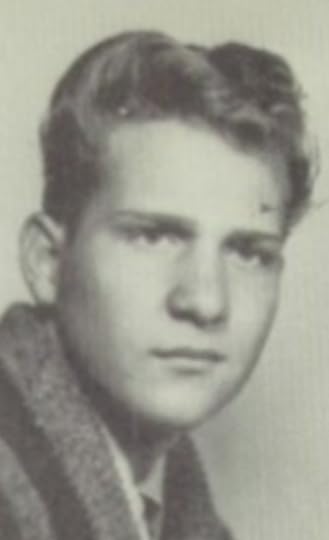
 Joseph James DeAngelo is a misogynist. A man who hates women. He is the Golden State Killer, and was arrested on 4/26/2018. He was also known as the East Side Rapist, and the Original Night Stalker. This guy was a first class jerk. He was a Sacramento police officer who was fired for stealing dog repellent. Is that a behavior people typically get fired for? No. Typically, they’d receive a disciplinary action but keep their job. They would use it fire someone if he was an obnoxious jerk, which appears to be the case. He ultimately secured employment as a food distributor and retired after 26 years, just a couple weeks ago. The Golden State Killer would break into homes, and ask victims, “Do you want to die? Do you want me to kill your mother?” If men were in the home he’d ask, "Do you want me to kill your wife?” His victims ranged in age from 13 to 31. He committed at least 51 rapes and 12 murders from 1976 until 1986.
Joseph James DeAngelo is a misogynist. A man who hates women. He is the Golden State Killer, and was arrested on 4/26/2018. He was also known as the East Side Rapist, and the Original Night Stalker. This guy was a first class jerk. He was a Sacramento police officer who was fired for stealing dog repellent. Is that a behavior people typically get fired for? No. Typically, they’d receive a disciplinary action but keep their job. They would use it fire someone if he was an obnoxious jerk, which appears to be the case. He ultimately secured employment as a food distributor and retired after 26 years, just a couple weeks ago. The Golden State Killer would break into homes, and ask victims, “Do you want to die? Do you want me to kill your mother?” If men were in the home he’d ask, "Do you want me to kill your wife?” His victims ranged in age from 13 to 31. He committed at least 51 rapes and 12 murders from 1976 until 1986.
Jane Carson was a victim at 6:30 am on October 5, 1976, in Citrus Heights, California. Jane was a reservist on the Traverse Air Force Base in Sacramento, California. Someone broke into her home after her husband left for work at the Air Force base. He tied her up, blindfolded her, and gagged her. Her son had crawled in bed with her after her husband left. The attacker tied up and blindfolded her son and carried him to another room. He then raped Jane. The rapist then went into the kitchen and made himself something to eat. Jane untied herself and her son, and fled the house while the rapist was still present.
The rapist never wore the same clothes. Bicycles were abandoned near crime scenes. By November of 1976, 8 rapes had occurred in Citrus Heights, about once a month after they started. Every victim said he had a small penis. Gun sales widely increased, to no avail. At that time the paper announced that he only targets women who are home alone. A man stood up at a public meeting (attended by hundreds) and announced the rapist would never get by with this, if a man was home with a gun. The Golden State Killer let everyone know he was listening, as this man’s home was the next target. The man woke to a gun to his head. He made the man’s wife tie him up. He laid the man face down, then placed dishes on the man’s back and told him if he hears these dishes rattle he will kill his wife. He then raped the man’s wife.
The 27th victim was a 13-year-old girl. He had tied up the girl’s mother and placed dishes on her back. This girl had been obsessed with reading the case, and every time he asked if she wanted him to do something, she responded, “I don’t care.” She had read that the killer enjoyed scaring people, so she didn’t want to comply. He raped her, while her mother screamed for help. When the rapist went to shut up the mother, the 13 year old hopped into the bathroom and locked the door. When the rapist returned and saw she was gone, he ran.
On February 2, 1978, in Rancho Cordova, California, Brian and Kate Maggjerie (Victims 30 and 31) were a young couple out for a walk. Katie just turned 20. They observed a prowler breaking into a home, and being a great neighbor, Brian confronted him. The Golden State Killer shot them both dead.
The Golden State Killer began calling his victims and would either breathe deeply, or would say, “I’m going to kill you,” in the same distorted voice he used during the rapes. He would call dispatch and tell them, “I’m going to rape again.”
On December 9, 1978, he raped a single woman living alone. At this scene, they discovered the first evidence (other than DNA evidence). The killer always wore gloves. The killer had apparently “dropped” an essay he wrote, not far from the home, about how poorly he was treated by his 6th grade teacher. He also left a hand-written map of a housing project. This led profilers to believe the killer was employed designing a housing project. This profile was further supported by the fact that the assaults had now moved down I-680 to Modesto, Concord, and then San Jose, California. Investigators believed he dropped the map by mistake because it wasn’t obvious. I believe the killer knew a thorough search would follow, and this evidence would lead investigators in the wrong direction. (Suggesting a knowledge of investigations.)
The assaults then moved to Goleta (just outside of Santa Barbara). He tied up the man. After the rapist tied up the woman, he repeatedly told himself, “I’ll kill him. I’ll kill him. I’ll kill him.” The man managed to untie himself and escape the house. The rapist went after him. The woman then managed to untie herself, and escaped the house; however (like the scene of a horror movie), the rapist caught her in the yard. The woman screamed. Fortunately, her neighbor was an FBI agent. The agent came running and a chase scene ensued, and the killer is close to being caught. The Golden State Killer used the bike for a bit, end then jumped fences to narrowly escape from the agent into a creek. This changed things for the killer. Prior to this, he killed 2 people who had caught him breaking in, but hadn’t killed any rape victims. Now, he begins killing his rape victims.
Months later, Dr. Debra Manning, and her partner, Dr. Robert Offerman, are murdered after he rapes Dr. Manning. Three months later, Charlene and Lymon Smith are bludgeoned to death after he rapes Charlene. From 1976 to the spring of 1980, he’s committed dozens of rapes and 4 murders. He is no longer called the East Area Rapist, and is now referred to as the Golden State Killer.
Deb Domingo, a teenager, had an argument with her mother and left home. When she returned her mother, Cheri Domingo and her partner, Greg Sanchez, had been beaten to death after Cheri was raped.
In 1986, in Irvine, California, Janel Cruz had unknowingly walked by the Golden State Killer. He followed her home, tied her up, sexually assaulted her, and beat her to death. The beatings had become more severe each time, and this time it was so severe they needed a closed casket. Janel was the last known victim. However, investigators knew the Golden State Killer was still alive in 2002, as he was still calling and taunting victims.
In February of 1998, investigators working a cold case unit in Orange County receive funding for DNA testing, and as a result, realize they have over 50 cases linked to one rapist’s DNA. The DNA links to 28 rapes in Sacramento, 2 in Concord, 2 in Modesto, 11 in San Jose, 6 in Santa Barbra, 2 in Ventura, and 4 in Orange County. DNA links over 50 rapes and 12 murders between 1976 to 1986. On August 21, 1980, Roger Harrington went to visit his son Keith and Keith’s new wife, Patti, in Dana Point. Patti was a nurse and Keith was attending medical school in Irvine. Roger discovered their bodies. Patti was raped and both were beaten to death. At the time, Roger was convinced someone from Patti’s work at hospitals had followed her home. The 1998 DNA testing confirmed it was the Golden State Killer. The Harringtons are a family of attorneys, and they were the impetus that lead to passing proposition 69 in 2004. This allowed for the DNA testing of every felon in prison. The belief at the time was the murders may have stopped because the Golden State Killer was in prison. Even though this didn’t lead to discovering the Golden State Killer, it did lead to solving over 5,000 unsolved crimes.
On August 21, 1980, Roger Harrington went to visit his son Keith and Keith’s new wife, Patti, in Dana Point. Patti was a nurse and Keith was attending medical school in Irvine. Roger discovered their bodies. Patti was raped and both were beaten to death. At the time, Roger was convinced someone from Patti’s work at hospitals had followed her home. The 1998 DNA testing confirmed it was the Golden State Killer. The Harringtons are a family of attorneys, and they were the impetus that lead to passing proposition 69 in 2004. This allowed for the DNA testing of every felon in prison. The belief at the time was the murders may have stopped because the Golden State Killer was in prison. Even though this didn’t lead to discovering the Golden State Killer, it did lead to solving over 5,000 unsolved crimes.
In my newest novel, The I-94 Murders , available in September of 2018, I propose the solution to finding a serial killer (when he is not in the system) is to go through a DNA testing program such as Ancestory.com. If you can identify relatives, you can significantly diminish the list of suspects. Keep in mind, I wrote this and turned it in to the publisher 4 months before the Golden State Killer was caught. And this is just how he was caught. They used a similar site, GEDmatch.com, which is used to find lost relatives, and through the DNA of relatives found the Golden State Killer. The ethical concern is that people who are submitting their DNA for testing aren’t thinking that submitting their DNA could lead to the arrests of relatives. I think it is worth giving investigators access to this data to solve crimes. This explains why DeAngelo went from not being on anyone’s suspect list on April 18, 2018, to being arrested on April 26, 2018. Full DNA profiles close cases. While some argue DNA is not 100%, I’ll explain the odds. If your parents had 64 trillion children, it’s possible that another one of their children could have committed the crime. Keep in mind there are only about 7.4 billion people on earth.
Quotes: (more Mitch Hedberg)
It takes forever to cook a baked potato in a conventional oven. Sometimes I'll just throw one in there, even if I don't want one. By the time it's done... who knows?
You know when you go to concerts, and the kids get on stage and they jump into the crowd, stage diving? People think that's dangerous, but not me. Because humans are made out of 95% water. So the audience is 5% away from a pool.
Sometimes I take a toothpick and throw it in the forest and say "You're home!"
On the back of the box of Ritz crackers, they have all these suggestions as to what to put on top of the Ritz. Try it with turkey and cheese. Try it with peanut butter. Oh, come on, man, they're crackers, that's why I got them. I like crackers. I didn't buy them because they're little edible plates.
I rent a lot of cars, cause I go on the road. And when I drive a rental car, I don't know what's going on with it, right? So a lot of times I'll drive for, like, ten miles with the emergency brake on. That doesn't say a lot for me, but it really doesn't say a lot for the EMERGENCY BRAKE.
Someone asked me how you abbreviate Arkansas. I told them, "I don't know. Just start spelling it and quit."
Thanks for listening,
Frank
Pierz is off to an exciting springs sports season. The softball and baseball teams are both undefeated (6-0). The baseball JV pitchers haven’t given up a run, or even a hit, so far. The girls’ track team has won 2 meets. Pierz held a jazz and choir event at the Pierz ballroom that packed the house. Most importantly people are getting out and enjoying the nice weather. Here are some pictures. I’ll try to catch baseball next time.

























































The Golden State Killer

 Joseph James DeAngelo is a misogynist. A man who hates women. He is the Golden State Killer, and was arrested on 4/26/2018. He was also known as the East Side Rapist, and the Original Night Stalker. This guy was a first class jerk. He was a Sacramento police officer who was fired for stealing dog repellent. Is that a behavior people typically get fired for? No. Typically, they’d receive a disciplinary action but keep their job. They would use it fire someone if he was an obnoxious jerk, which appears to be the case. He ultimately secured employment as a food distributor and retired after 26 years, just a couple weeks ago. The Golden State Killer would break into homes, and ask victims, “Do you want to die? Do you want me to kill your mother?” If men were in the home he’d ask, "Do you want me to kill your wife?” His victims ranged in age from 13 to 31. He committed at least 51 rapes and 12 murders from 1976 until 1986.
Joseph James DeAngelo is a misogynist. A man who hates women. He is the Golden State Killer, and was arrested on 4/26/2018. He was also known as the East Side Rapist, and the Original Night Stalker. This guy was a first class jerk. He was a Sacramento police officer who was fired for stealing dog repellent. Is that a behavior people typically get fired for? No. Typically, they’d receive a disciplinary action but keep their job. They would use it fire someone if he was an obnoxious jerk, which appears to be the case. He ultimately secured employment as a food distributor and retired after 26 years, just a couple weeks ago. The Golden State Killer would break into homes, and ask victims, “Do you want to die? Do you want me to kill your mother?” If men were in the home he’d ask, "Do you want me to kill your wife?” His victims ranged in age from 13 to 31. He committed at least 51 rapes and 12 murders from 1976 until 1986.Jane Carson was a victim at 6:30 am on October 5, 1976, in Citrus Heights, California. Jane was a reservist on the Traverse Air Force Base in Sacramento, California. Someone broke into her home after her husband left for work at the Air Force base. He tied her up, blindfolded her, and gagged her. Her son had crawled in bed with her after her husband left. The attacker tied up and blindfolded her son and carried him to another room. He then raped Jane. The rapist then went into the kitchen and made himself something to eat. Jane untied herself and her son, and fled the house while the rapist was still present.
The rapist never wore the same clothes. Bicycles were abandoned near crime scenes. By November of 1976, 8 rapes had occurred in Citrus Heights, about once a month after they started. Every victim said he had a small penis. Gun sales widely increased, to no avail. At that time the paper announced that he only targets women who are home alone. A man stood up at a public meeting (attended by hundreds) and announced the rapist would never get by with this, if a man was home with a gun. The Golden State Killer let everyone know he was listening, as this man’s home was the next target. The man woke to a gun to his head. He made the man’s wife tie him up. He laid the man face down, then placed dishes on the man’s back and told him if he hears these dishes rattle he will kill his wife. He then raped the man’s wife.
The 27th victim was a 13-year-old girl. He had tied up the girl’s mother and placed dishes on her back. This girl had been obsessed with reading the case, and every time he asked if she wanted him to do something, she responded, “I don’t care.” She had read that the killer enjoyed scaring people, so she didn’t want to comply. He raped her, while her mother screamed for help. When the rapist went to shut up the mother, the 13 year old hopped into the bathroom and locked the door. When the rapist returned and saw she was gone, he ran.
On February 2, 1978, in Rancho Cordova, California, Brian and Kate Maggjerie (Victims 30 and 31) were a young couple out for a walk. Katie just turned 20. They observed a prowler breaking into a home, and being a great neighbor, Brian confronted him. The Golden State Killer shot them both dead.
The Golden State Killer began calling his victims and would either breathe deeply, or would say, “I’m going to kill you,” in the same distorted voice he used during the rapes. He would call dispatch and tell them, “I’m going to rape again.”
On December 9, 1978, he raped a single woman living alone. At this scene, they discovered the first evidence (other than DNA evidence). The killer always wore gloves. The killer had apparently “dropped” an essay he wrote, not far from the home, about how poorly he was treated by his 6th grade teacher. He also left a hand-written map of a housing project. This led profilers to believe the killer was employed designing a housing project. This profile was further supported by the fact that the assaults had now moved down I-680 to Modesto, Concord, and then San Jose, California. Investigators believed he dropped the map by mistake because it wasn’t obvious. I believe the killer knew a thorough search would follow, and this evidence would lead investigators in the wrong direction. (Suggesting a knowledge of investigations.)
The assaults then moved to Goleta (just outside of Santa Barbara). He tied up the man. After the rapist tied up the woman, he repeatedly told himself, “I’ll kill him. I’ll kill him. I’ll kill him.” The man managed to untie himself and escape the house. The rapist went after him. The woman then managed to untie herself, and escaped the house; however (like the scene of a horror movie), the rapist caught her in the yard. The woman screamed. Fortunately, her neighbor was an FBI agent. The agent came running and a chase scene ensued, and the killer is close to being caught. The Golden State Killer used the bike for a bit, end then jumped fences to narrowly escape from the agent into a creek. This changed things for the killer. Prior to this, he killed 2 people who had caught him breaking in, but hadn’t killed any rape victims. Now, he begins killing his rape victims.
Months later, Dr. Debra Manning, and her partner, Dr. Robert Offerman, are murdered after he rapes Dr. Manning. Three months later, Charlene and Lymon Smith are bludgeoned to death after he rapes Charlene. From 1976 to the spring of 1980, he’s committed dozens of rapes and 4 murders. He is no longer called the East Area Rapist, and is now referred to as the Golden State Killer.
Deb Domingo, a teenager, had an argument with her mother and left home. When she returned her mother, Cheri Domingo and her partner, Greg Sanchez, had been beaten to death after Cheri was raped.
In 1986, in Irvine, California, Janel Cruz had unknowingly walked by the Golden State Killer. He followed her home, tied her up, sexually assaulted her, and beat her to death. The beatings had become more severe each time, and this time it was so severe they needed a closed casket. Janel was the last known victim. However, investigators knew the Golden State Killer was still alive in 2002, as he was still calling and taunting victims.
In February of 1998, investigators working a cold case unit in Orange County receive funding for DNA testing, and as a result, realize they have over 50 cases linked to one rapist’s DNA. The DNA links to 28 rapes in Sacramento, 2 in Concord, 2 in Modesto, 11 in San Jose, 6 in Santa Barbra, 2 in Ventura, and 4 in Orange County. DNA links over 50 rapes and 12 murders between 1976 to 1986.
 On August 21, 1980, Roger Harrington went to visit his son Keith and Keith’s new wife, Patti, in Dana Point. Patti was a nurse and Keith was attending medical school in Irvine. Roger discovered their bodies. Patti was raped and both were beaten to death. At the time, Roger was convinced someone from Patti’s work at hospitals had followed her home. The 1998 DNA testing confirmed it was the Golden State Killer. The Harringtons are a family of attorneys, and they were the impetus that lead to passing proposition 69 in 2004. This allowed for the DNA testing of every felon in prison. The belief at the time was the murders may have stopped because the Golden State Killer was in prison. Even though this didn’t lead to discovering the Golden State Killer, it did lead to solving over 5,000 unsolved crimes.
On August 21, 1980, Roger Harrington went to visit his son Keith and Keith’s new wife, Patti, in Dana Point. Patti was a nurse and Keith was attending medical school in Irvine. Roger discovered their bodies. Patti was raped and both were beaten to death. At the time, Roger was convinced someone from Patti’s work at hospitals had followed her home. The 1998 DNA testing confirmed it was the Golden State Killer. The Harringtons are a family of attorneys, and they were the impetus that lead to passing proposition 69 in 2004. This allowed for the DNA testing of every felon in prison. The belief at the time was the murders may have stopped because the Golden State Killer was in prison. Even though this didn’t lead to discovering the Golden State Killer, it did lead to solving over 5,000 unsolved crimes.In my newest novel, The I-94 Murders , available in September of 2018, I propose the solution to finding a serial killer (when he is not in the system) is to go through a DNA testing program such as Ancestory.com. If you can identify relatives, you can significantly diminish the list of suspects. Keep in mind, I wrote this and turned it in to the publisher 4 months before the Golden State Killer was caught. And this is just how he was caught. They used a similar site, GEDmatch.com, which is used to find lost relatives, and through the DNA of relatives found the Golden State Killer. The ethical concern is that people who are submitting their DNA for testing aren’t thinking that submitting their DNA could lead to the arrests of relatives. I think it is worth giving investigators access to this data to solve crimes. This explains why DeAngelo went from not being on anyone’s suspect list on April 18, 2018, to being arrested on April 26, 2018. Full DNA profiles close cases. While some argue DNA is not 100%, I’ll explain the odds. If your parents had 64 trillion children, it’s possible that another one of their children could have committed the crime. Keep in mind there are only about 7.4 billion people on earth.
Quotes: (more Mitch Hedberg)
It takes forever to cook a baked potato in a conventional oven. Sometimes I'll just throw one in there, even if I don't want one. By the time it's done... who knows?
You know when you go to concerts, and the kids get on stage and they jump into the crowd, stage diving? People think that's dangerous, but not me. Because humans are made out of 95% water. So the audience is 5% away from a pool.
Sometimes I take a toothpick and throw it in the forest and say "You're home!"
On the back of the box of Ritz crackers, they have all these suggestions as to what to put on top of the Ritz. Try it with turkey and cheese. Try it with peanut butter. Oh, come on, man, they're crackers, that's why I got them. I like crackers. I didn't buy them because they're little edible plates.
I rent a lot of cars, cause I go on the road. And when I drive a rental car, I don't know what's going on with it, right? So a lot of times I'll drive for, like, ten miles with the emergency brake on. That doesn't say a lot for me, but it really doesn't say a lot for the EMERGENCY BRAKE.
Someone asked me how you abbreviate Arkansas. I told them, "I don't know. Just start spelling it and quit."
Thanks for listening,
Frank
Pierz is off to an exciting springs sports season. The softball and baseball teams are both undefeated (6-0). The baseball JV pitchers haven’t given up a run, or even a hit, so far. The girls’ track team has won 2 meets. Pierz held a jazz and choir event at the Pierz ballroom that packed the house. Most importantly people are getting out and enjoying the nice weather. Here are some pictures. I’ll try to catch baseball next time.


























































Published on April 29, 2018 08:34
April 26, 2018
Rainbows, Better Roads, and Edward Edwards
 Frank speaking at the St. Mary's County Author Fair I am excited about the arrest of the Golden State Killer. This will be great publicity for my next book,
The I-94 Murders
. The DA has been reluctant to reveal how they identified a man, who wasn’t on the suspect list on April 19, 2018, 6 days later. I feel it is because of using a new DNA trick I identify in my new book. I will talk about this more in next week’s blog!
Frank speaking at the St. Mary's County Author Fair I am excited about the arrest of the Golden State Killer. This will be great publicity for my next book,
The I-94 Murders
. The DA has been reluctant to reveal how they identified a man, who wasn’t on the suspect list on April 19, 2018, 6 days later. I feel it is because of using a new DNA trick I identify in my new book. I will talk about this more in next week’s blog!I spoke to a group at the Whitney Center in St. Cloud on Murder Book. It was an amazing group with great questions, who bought a lot of books. Thank you! I had the opportunity to speak at an author fair at St. Mary’s Library in Lexington Park, Maryland, this past weekend. Julia Maki was one of the authors at the fair who has written an autobiography (Titled: What They Don’t Teach You in Deer River). She worked on jets for the military and has also written a number of children’s books for children whose parents are in the military, including books about having a parent with a disability. Julia was from Deer River, Minnesota and now lives in Maryland. Julia was first enlisted in the Navy and later in the Air Force. She spoke of how when she was first on military planes they didn’t have places where a woman could easily urinate. Her only option was grabbing handles on the ceiling and hanging over a urinal, rocking back and forth as the jet cruised. She also shared how important it is to her to stop and stand for the national anthem out of respect for all of the Americans who give their life, and spend time away from their families, to help people globally. I agree. Here’s an interesting insight I received from being at the Naval Air Station in Patuxent River. Rainbows can be complete circles from the sky, with half of the rainbow on the ground.
Brenda and I flew into Washington DC, and I have to say it’s the worst place I’ve ever driven in (and I’ve driven in Los Angeles several times in the last year). Coming out of the airport 3 lanes converged to 1 lane to go under an overpass. A semi-truck broke down under the overpass in that one lane, jamming up traffic for miles. I think of all of the intelligent engineers we have in this country, and I have to believe we could make this system better. At the same time, I don’t make myself crazy over it, because I still got from Minnesota to Lexington Park, Maryland in one day, which is much better than the experiences of the pilgrims, or I could do on foot. It was disappointing for Brenda and I to lose a good part of a day we would have had with our 4-year-old granddaughter. During the visit, she asked me why my dad died. I told her we are all going to get old someday and die, which led her to ask, “Are you going to die too?”
I explained, “Someday, but I don’t want you to worry about it. I grew up in a nice family, I have some nice people I work with, and I have a nice family I spend my free time with, so whenever I die, I’ll be pretty happy. But I don’t want you to worry about that because when it happens it will be okay. Do you know what I’m thinking about?”
She asked, “What?”
“I’m thinking about something I’m going to enjoy yet today--the pushover game.” (The pushover game involves me sitting on the floor and she runs at me and jumps on me. I call her ‘a little varmint’ and chase her, and Brenda ultimately rescues her.)
At one point I bought a malt and told my granddaughter we could split it. After she consumed the first half I said, “I’m ready.”
She told me, “I can’t. It’s too good.” Instead she handed me Brenda’s iced tea and said in her most convincing voice, “Grandma likes this!”
I want to vote for someone who sees the bigger picture. Someone who can suggest changes that will save us time and money. In Minnesota for example: The stretch of highway 94 from Minneapolis to St. Cloud is the busiest stretch of road in the state. Wouldn’t it make more sense to have a light-rail train people could take to ball games in the Twin Cities or to the Mall of America? Another example: We have places that flood every other year such as in the Red River valley in northern Minnesota and we sandbag rivers until they run into Iowa and become their problem. Wouldn’t it make more sense to have a reservoir running the water into an abandoned gravel pit in northern Minnesota where they could later pump the water back out on to farm land as they dry out? Just thinking out loud…
I always wonder what makes some people amazing, and others terrible people. My experience providing assessments on disturbed people indicate they typically start out with terrible childhood trauma, and with no one to help them through it. It highlights the importance of helping people who struggle.
Morality Trumps Loyalty (Consider the following story of a daughter who had to turn on her father.)
I’m going to talk about Edward Edwards, a serial killer who was brought to the attention of police by his adult daughter, April Balascio, after she considered the manner in which he moved the family every six months, often in the middle of the night. It was difficult for April to turn her dad in to authorities, and later she struggled with guilt over not having reported him sooner. April remembered Edward was obsessed with murder and detective stories and loved to ingratiate himself with the cops, inserting himself into local investigations by offering to be an informant, wherever they lived. There are a lot of conspiracy theories about Edward Edwards committing many famous murders and setting up others. There is a theory that he set up Steve Avery (from the Making a Murderer documentary) for his crime. The problem is that Edwards is a chronic liar and he believes there is glory in being a famous murderer. I will talk about five murders we know he did commit.
Edward Wayne Edwards (born Charles Murray, June 14, 1933 – April 7, 2011) was born in Akron, Ohio. Like most of the criminals I talk about, he started out life rough. He grew up primarily as an orphan after witnessing the gun suicide of his mother at age 5, and then experiencing the death of his foster mother a short time later. In his autobiography, Edwards reported that he was abused, both physically and emotionally, in an orphanage, which contributed to his criminal behavior. He was allowed to get out of juvenile detention to join the U.S. Marines, went AWOL, and was subsequently dishonorably discharged. Then he returned to his criminal lifestyle. He traveled frequently during his 20s and 30s doing odd jobs, such as working as a ship docker, vacuum retailer and handyman. He lived most of his life, when not incarcerated, in Louisville, Kentucky.
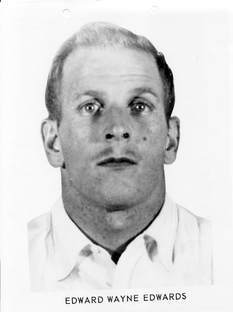 In 1955, Edwards escaped from a jail in Akron and drifted around the country, robbing gas stations when he needed money. He wrote that he never disguised his appearance during crimes because he wanted to be famous (fairly typical of a narcissist psychopath). His name was placed on the FBI's 10 Most Wanted list in 1961. He was eventually imprisoned in Leavenworth, from which he was paroled in 1967. He claimed that as the result of the influence of a benevolent guard at Leavenworth, he reformed and married, and became a motivational speaker on the subject of his reform.
In 1955, Edwards escaped from a jail in Akron and drifted around the country, robbing gas stations when he needed money. He wrote that he never disguised his appearance during crimes because he wanted to be famous (fairly typical of a narcissist psychopath). His name was placed on the FBI's 10 Most Wanted list in 1961. He was eventually imprisoned in Leavenworth, from which he was paroled in 1967. He claimed that as the result of the influence of a benevolent guard at Leavenworth, he reformed and married, and became a motivational speaker on the subject of his reform.In 1972, he wrote an autobiography titled The Metamorphosis of a Criminal: The True Life Story of Ed. As a result of his celebrity status, Edwards was invited to appear on two television shows, "To Tell the Truth" (1972) and "What's My Line?" in 1972. In 1982, he had clearly returned to crime, and was imprisoned in Pennsylvania for two years for arson after he burned down his home. The family had moved years earlier from a previous home after it burned to the ground. His daughter, April, reported that they moved about every 6 months, often in the middle of the night, to another state, and were told they couldn’t tell anyone where they were going. Edwards had told the family that he was a police informant and as a result of threats against his family they needed to move and not let anyone know of their new address.
Edward’s daughter, April Balascio, and her four younger siblings had a discussion about their father after he stabbed their mother with a butcher knife (over one of the boys eating half a bag of potato chips when he was hungry for them) and wondered about other crimes he had committed. In 2009, at age 48, after searching online for “cold cases” and towns that they’d lived in when she was a child, his daughter found a story that stood out: the story of two teens in Watertown, Wisconsin, who had disappeared after a wedding reception in Sullivan, Wisconsin, in 1980. Balascio knew her dad had worked at that same venue, the Concord House, and she remembered their family fleeing Watertown two days after the teens vanished. She decided to call the detective on the case, which had recently been reopened, to see if maybe her dad could have had something to do with it. A cold case unit was able to generate a complete DNA profile of the killer.
The Sweetheart Murders:
Tim Hack and Kelly Drew were 19-year-olds who were sweethearts back in a small rural high school. They were ‘in love’ and had left the wedding to go parking. Tim worked the family farm, and was involved in tractor pulls. Kelly had recently completed beauty school and worked at the local Dairy Queen and the hair salon. Tim had been stabbed to death. Kelly was raped and then strangled. Their killing was dubbed the Sweetheart Murders. April remembered her father being obsessed with talking about the murders. After April called the police in 2009, DNA testing was performed and it was discovered Edward W. Edwards was the killer. He was arrested in a trailer park in Louisville, Kentucky. Edward Wayne Edwards was extradited from Kentucky to Wisconsin to be tried for the murders. Edward stated he wanted the death penalty in court, but Wisconsin doesn’t have a death penalty. So he confessed to a murder he committed in Ohio, which did have the death penalty.
Known Murders:
William “Billy” Lovaco 1956-1977
Judith Straub 1959-1977
Edward murdered the two when he caught them “parking.” Edward reported he had concerns William was molesting his daughter. There was no evidence this took place and was never confirmed by his daughter. Edward claimed he had held a rifle to William, telling him to stay away from his daughter, out of the site of Judith. When William said his name, he felt he had to kill both so he wouldn’t get in trouble for the threat. He received life sentences for these crimes in 2010.
Timothy Hack 1961-1980
Kelly Drew 1961-1980
Edward caught the two parking after a wedding dance and murdered both with the motive of raping Kelly. Almost 29 years later his connection to the crime was established by means of DNA testing, after being tipped off by Edward’s daughter.
When asked if he felt sorry for the victims Edwards response was, “If I would have felt sorry for them, I never would have done it in the first place.”
Dannie Boy Edwards (1971-1996)
Edward had helped Dannie when he was younger. The victim was referred to as an adopted child who had lived with Edwards and his wife for several years. Danny's original name was Danny Law Gloeckner. Dannie changed his name to Edwards out of fondness for this family. When Dannie joined the military he named Edward Edwards as his beneficiary to an insurance policy. Dannie ended up getting hurt in Korea. Edward convinced him to go AWOL and then killed Dannie for the insurance money. Edwards was sentenced to death for this crime in March 2011, but died in prison of natural causes a month later. The fact that he murdered his own adopted son for the insurance money gives you an idea of how terrible this person was.
Other possible murders:
It is difficult to know because Edward Edwards was a narcissistic liar who wanted to be the center of attention. So he claims to have known Charles Manson, perhaps been involved in the Jon Benet kidnapping, etc. His inability to come up with facts that would lead to prosecution suggests to me he was just blowing a lot of smoke.
According to Phil Stanford in his book The Peyton-Allan Files, Edwards may have been responsible for the murders of Beverly Allan and Larry Peyton in Portland, Oregon in 1960. Two men were arrested and imprisoned for these murders, but released from prison early. Authorities maintain that the correct persons were prosecuted.
Some investigators have noted that Edwards lived in northern California during each of the Zodiac Killer's murders in the late 1960s and would have, at the time, closely matched the Zodiac's description, although others dispute that claim.
In March 2017, Detective Chad Garcia of the Jefferson County (Wisconsin) Sheriff's Office said he was "pretty confident" there are at least five to seven more murders Edwards committed and "who knows beyond that." He gave a list of 15 suspected victims, adding that he was less sure Edwards was involved in the Zodiac killings. Edwards was a psychopath who verbally and physically abused his wife Kay, and made the children watch videos about the Zodiac Killer while screaming, “That’s not how it happened.” It’s difficult to say, as Edwards was a both a killer and a chronic liar.
Death:
Edwards died of natural causes at the Corrections Medical Center in Columbus, Ohio on April 7, 2011.
Quotes: (More from Mitch Hedberg)
I walked by a record store, the sign out front said they specialize in hard to find records and tapes... nothing was alphabetized.
I think foosball is a combination of soccer and shish kabobs.
I get the roundabout AIDS test. I call my friend Brian, I say "Hey Brian, do you know anybody who has AIDS?” Good news for me!
I'm in my hotel room, my friend comes over, he says, "Can I use the phone?" I said, "Certainly," he says "Do I have to dial 9?" "Yeah, especially if it's in the number."
I wake up in the morning and make myself a bowl of instant oatmeal. Then I sit around for an hour. I finally went back to regular oatmeal, just so I could feel productive.
Thanks for listening,
Frank

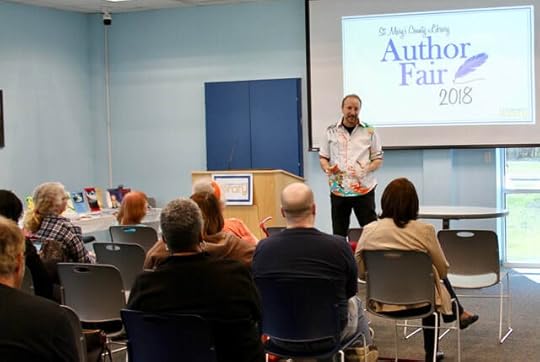 Frank and Brenda’s visit to Chesapeake Bay in Maryland.
Frank and Brenda’s visit to Chesapeake Bay in Maryland.
 Frank and Kaycee
Frank and Kaycee  Kaycee and Brenda
Kaycee and Brenda 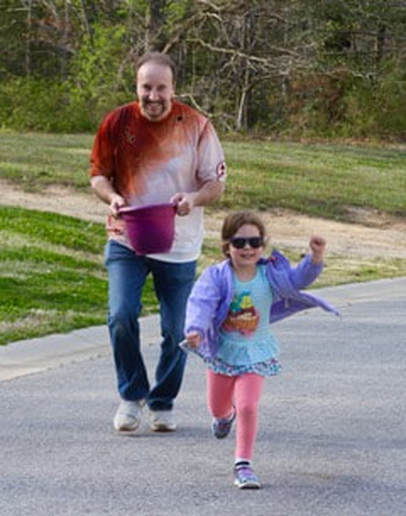 Frank and Kaycee
Frank and Kaycee  Kaycee and Nicolette
Kaycee and Nicolette  Kaycee and Frank
Kaycee and Frank  Branden, Nicolette, Brenda, and Kaycee
Branden, Nicolette, Brenda, and Kaycee 
 Branden and Kaycee
Branden and Kaycee  Frank
Frank  Branden and Nicolette
Branden and Nicolette  Branden and Nicolette
Branden and Nicolette  Brenda and Kaycee
Brenda and Kaycee  Brenda and Kaycee
Brenda and Kaycee  Nicolette and Brenda
Nicolette and Brenda  Kaycee
Kaycee  Kaycee
Kaycee  Branden and Kaycee
Branden and Kaycee  Kaycee
Kaycee 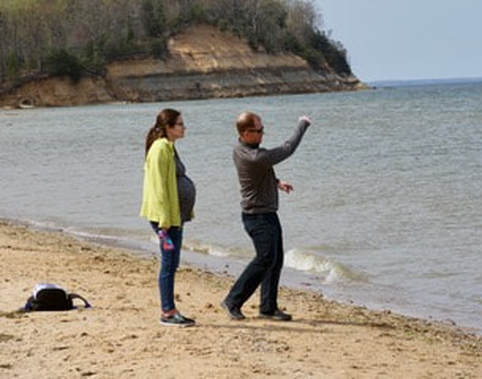 Nicolette and Branden
Nicolette and Branden 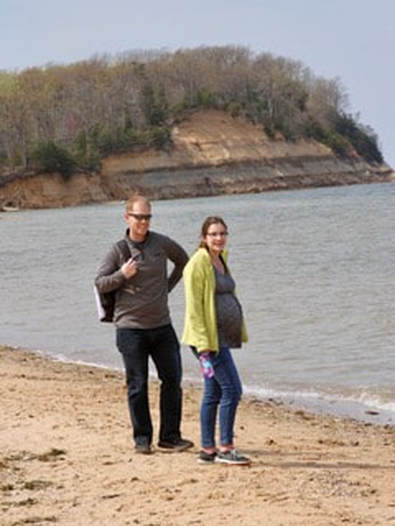 Branden and Nicolette
Branden and Nicolette  Nicolette and Brenda
Nicolette and Brenda 

 Nicolette and Brenda
Nicolette and Brenda 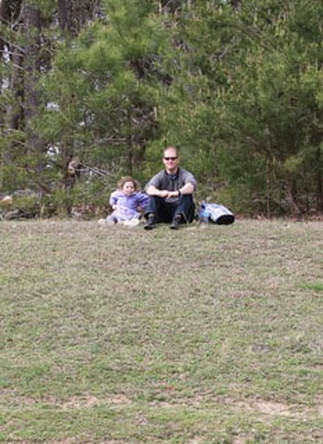 Kaycee and Branden
Kaycee and Branden  Nicolette
Nicolette 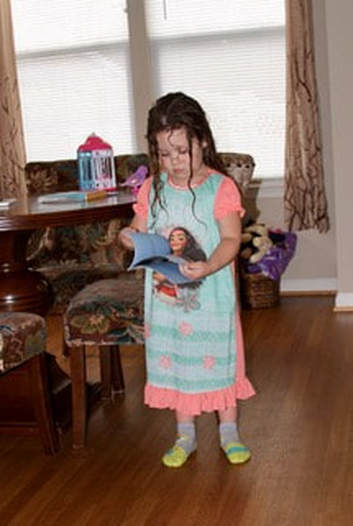 Kaycee
Kaycee  Kaycee
Kaycee  Kaycee
Kaycee  Kaycee, Branden, and Nicolette
Kaycee, Branden, and Nicolette  Nicolette, Kaycee, and Brenda
Nicolette, Kaycee, and Brenda
Published on April 26, 2018 07:08
April 16, 2018
Time for a Change. It’s Only a Change of Time.
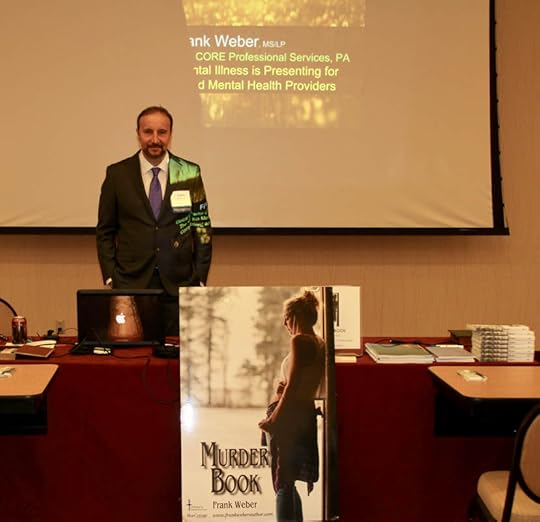 Frank speaking at the MNATSA Conference
Frank speaking at the MNATSA Conference  I firmly believe that if we put more money into therapy for mental illness, it would save a significant amount of money and many victims in the long run. I’ll outline the problem, and then offer some solutions. Here’s an analogy of our current efforts. You have a daughter you want to be a great cello player or a great basketball player. Instead of buying her a cello or a basketball, and offering her lessons, you take her to visit a nursing home, and then give her a bus ride to Ely. When you see she isn’t making progress, you send her detention. If you shared this strategy with friends, they would say, “Are you nuts? What you’re doing has nothing to do with playing cello or learning basketball.” But this is how we are dealing with mental illness.
I firmly believe that if we put more money into therapy for mental illness, it would save a significant amount of money and many victims in the long run. I’ll outline the problem, and then offer some solutions. Here’s an analogy of our current efforts. You have a daughter you want to be a great cello player or a great basketball player. Instead of buying her a cello or a basketball, and offering her lessons, you take her to visit a nursing home, and then give her a bus ride to Ely. When you see she isn’t making progress, you send her detention. If you shared this strategy with friends, they would say, “Are you nuts? What you’re doing has nothing to do with playing cello or learning basketball.” But this is how we are dealing with mental illness. 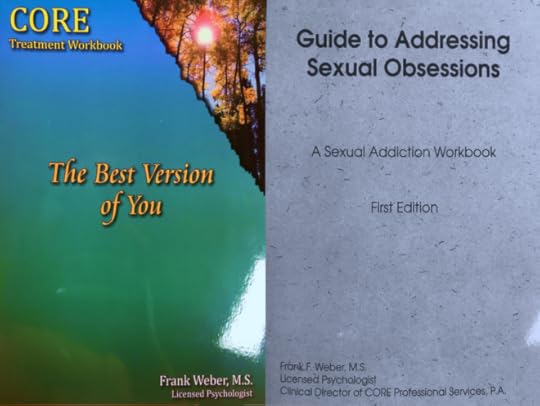 Frank wrote the first workbook for use with sex offender treatment. The second workbook is a list of assignments for 75 days for individuals who struggle with pornography addiction or excessive sexual behavior.
Frank wrote the first workbook for use with sex offender treatment. The second workbook is a list of assignments for 75 days for individuals who struggle with pornography addiction or excessive sexual behavior.  President Obama shared his concern that we need to address gun issues and mental illness more effectively to prevent school shootings from continuing to repeat.
President Obama shared his concern that we need to address gun issues and mental illness more effectively to prevent school shootings from continuing to repeat.  President Trump identifying the mental illness concerns.
President Trump identifying the mental illness concerns.  Paul Ryan acknowledging mental health concerns.
Paul Ryan acknowledging mental health concerns.  We have identified groups of people who need help. 83% of everyone who attends high school graduates, yet the majority of sex offenses in MN and nationally are committed by high school dropouts. 60% of sex offenses are committed by the 17% that drop out.
We have identified groups of people who need help. 83% of everyone who attends high school graduates, yet the majority of sex offenses in MN and nationally are committed by high school dropouts. 60% of sex offenses are committed by the 17% that drop out. 
 If you define serious mental illness as schizophrenia, bipolar disorder and major depression, it costs $193 billion in lost earnings in a year.
If you define serious mental illness as schizophrenia, bipolar disorder and major depression, it costs $193 billion in lost earnings in a year.  Bipolar individuals need to step away to calm down. Talking continues to escalate them.
Bipolar individuals need to step away to calm down. Talking continues to escalate them. 

 Every county that has both a mental health facility and a jail, has more mentally ill people in the jail. The jails in Chicago (Cook County), Los Angeles (LA County) and New York (Reiker’s Island) each hold more mentally ill people than the largest facility for treating mental illness in the US.
Every county that has both a mental health facility and a jail, has more mentally ill people in the jail. The jails in Chicago (Cook County), Los Angeles (LA County) and New York (Reiker’s Island) each hold more mentally ill people than the largest facility for treating mental illness in the US.  Mentally ill individuals struggle with following rules, commit more rule violations, so they lose their good time.
Mentally ill individuals struggle with following rules, commit more rule violations, so they lose their good time.  The medication for mentally ill people in jail exceeds the costs of feeding everyone in jail. They require more staff time. This doesn’t include the lawsuits. For example: A mentally ill stockbroker was beat to death by other inmates and his family successfully sued the New Jersey county jail for not preventing it.
The medication for mentally ill people in jail exceeds the costs of feeding everyone in jail. They require more staff time. This doesn’t include the lawsuits. For example: A mentally ill stockbroker was beat to death by other inmates and his family successfully sued the New Jersey county jail for not preventing it.  A mentally ill inmate suffered from PICA (eating inedibles), resulting in having his stomach pumped numerous times and 2 surgeries.
A mentally ill inmate suffered from PICA (eating inedibles), resulting in having his stomach pumped numerous times and 2 surgeries.  So more jail staff time is spent on suicide watches.
So more jail staff time is spent on suicide watches.  This is a problem in our schools too.
This is a problem in our schools too.  I tell people that for some, “When the engine overheats, the brakes don’t work," so they need to learn to turn down the heat. It doesn’t immediately dissipate. You step away and gradually cool down.
I tell people that for some, “When the engine overheats, the brakes don’t work," so they need to learn to turn down the heat. It doesn’t immediately dissipate. You step away and gradually cool down.  This is a national tragedy we need to address.
This is a national tragedy we need to address.  One of the new strategies is group therapy with veterans, as veterans are notoriously good at looking out for others. But they typically don’t tell family or friends of their struggle so part of the solution is being honest with those close. There is a safety plan phone app for veterans.
One of the new strategies is group therapy with veterans, as veterans are notoriously good at looking out for others. But they typically don’t tell family or friends of their struggle so part of the solution is being honest with those close. There is a safety plan phone app for veterans.  So the Department of Human Services decided to take a look at how well jails were dealing with this. Their conclusion:
So the Department of Human Services decided to take a look at how well jails were dealing with this. Their conclusion:  People are discharged from jail with nowhere to go, which drastically increases the odds that they are going to be rearrested. It’s not fair to blame the jails, as they have no place to send people.
People are discharged from jail with nowhere to go, which drastically increases the odds that they are going to be rearrested. It’s not fair to blame the jails, as they have no place to send people.  Once juveniles are placed in detention, they are actually less likely to get mental health help, which increases their risk of rearrest.
Once juveniles are placed in detention, they are actually less likely to get mental health help, which increases their risk of rearrest.  I took a look at 1 year in Hennipen County. 119 people were found incompetent to stand trial for their crimes. 46 were civilly committed. No resolution was reached on 4 cases. 7 received a stay of commitment, meaning if they stay out of trouble the charges will be dropped. 62 were released with nothing. Think about this. Someone robs your store. You call the police and they are arrested. They are found incompetent to face the charges so they are released with nothing. So what do you think happens next? They keep committing crimes. They call them “gap patients”—not crazy enough to require placement, but just crazy enough to commit crimes. This costs us a lot of money in the long run. For Example: Jack McClellan is a veteran who came to Hennepin County’s mental health system the usual way—he was arrested. (He had committed 2 thefts, 2 trespassing and an indecent exposure crime.) He was found incompetent to face charges, but was not civilly committed because he was not suicidal and not a threat to abuse others. The judge expressed concern that Jack was homeless and it was November in Minnesota. Jack was back in court in February with 4 more trespassing and theft charges, now wearing medical boots because he had frozen his feet. So now we are paying expensive medical bills because we didn’t have a system to address crisis mental illness.
I took a look at 1 year in Hennipen County. 119 people were found incompetent to stand trial for their crimes. 46 were civilly committed. No resolution was reached on 4 cases. 7 received a stay of commitment, meaning if they stay out of trouble the charges will be dropped. 62 were released with nothing. Think about this. Someone robs your store. You call the police and they are arrested. They are found incompetent to face the charges so they are released with nothing. So what do you think happens next? They keep committing crimes. They call them “gap patients”—not crazy enough to require placement, but just crazy enough to commit crimes. This costs us a lot of money in the long run. For Example: Jack McClellan is a veteran who came to Hennepin County’s mental health system the usual way—he was arrested. (He had committed 2 thefts, 2 trespassing and an indecent exposure crime.) He was found incompetent to face charges, but was not civilly committed because he was not suicidal and not a threat to abuse others. The judge expressed concern that Jack was homeless and it was November in Minnesota. Jack was back in court in February with 4 more trespassing and theft charges, now wearing medical boots because he had frozen his feet. So now we are paying expensive medical bills because we didn’t have a system to address crisis mental illness.  Some counties buy a mentally ill person a bus ticket to the next county where the person then becomes someone else’s problem.
Some counties buy a mentally ill person a bus ticket to the next county where the person then becomes someone else’s problem.  Putting young people with difficulty regulating their emotions with vulnerable adults, simply because we don’t have MI beds is a terrible solution.
Putting young people with difficulty regulating their emotions with vulnerable adults, simply because we don’t have MI beds is a terrible solution.  If they go to an emergency room for a psychotic episode, and the physician feels they are not safe enough to release, they stay in the emergency room until an opening occurs. They don’t admit them to the hospital, for fear they will never get rid of them, so they sit behind the curtains, often talking loudly, while crisis medical cases are addressed around them.
If they go to an emergency room for a psychotic episode, and the physician feels they are not safe enough to release, they stay in the emergency room until an opening occurs. They don’t admit them to the hospital, for fear they will never get rid of them, so they sit behind the curtains, often talking loudly, while crisis medical cases are addressed around them. 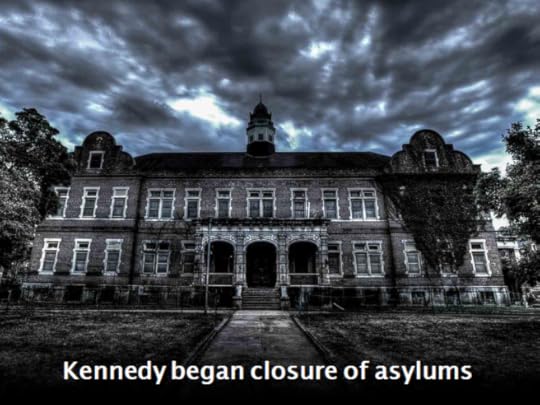 This all got started when John Kennedy decided we needed to close asylums and the states began the 20 year process. Reform was certainly needed. Kennedy stated we need to provide community resources instead, which clearly hasn’t occurred to the degree needed.
This all got started when John Kennedy decided we needed to close asylums and the states began the 20 year process. Reform was certainly needed. Kennedy stated we need to provide community resources instead, which clearly hasn’t occurred to the degree needed.  Schizophrenia is the most debilitating of all mental illnesses, still 25% show good recovery and 75% show improvement. The success rate for treating bipolar disorder is 80%. Our society would be far better if we provided people access to affordable mental health services.
Schizophrenia is the most debilitating of all mental illnesses, still 25% show good recovery and 75% show improvement. The success rate for treating bipolar disorder is 80%. Our society would be far better if we provided people access to affordable mental health services.  Only 15% of law enforcement officers have training in addressing mental illness and most received that training independently. An officer is 2X as likely to get killed in a domestic call than in a drug bust. Often they’re dealing with at least one person with mental illness concerns in domestic arguments.
Only 15% of law enforcement officers have training in addressing mental illness and most received that training independently. An officer is 2X as likely to get killed in a domestic call than in a drug bust. Often they’re dealing with at least one person with mental illness concerns in domestic arguments. 
 We need to start looking at the overall cost to the taxpayer, rather than department budgets. When San Antonio combined the costs of social services and corrections they realized that some people cost taxpayers a lot of money. So they gave probation officers smaller caseloads, and the task of helping make sure clients get to counseling sessions. Ultimately, it saved almost $3000 a person, every year.
We need to start looking at the overall cost to the taxpayer, rather than department budgets. When San Antonio combined the costs of social services and corrections they realized that some people cost taxpayers a lot of money. So they gave probation officers smaller caseloads, and the task of helping make sure clients get to counseling sessions. Ultimately, it saved almost $3000 a person, every year.  Some states have Assertive Community Treatment programs which basically employs professionals to help in any way possible to keep clients functioning in the community. These programs ultimately pay for themselves, by saving taxpayers the cost of jail and inpatient placements. Unfortunately, these programs are typically the first to get cut when budgets are tight.
Some states have Assertive Community Treatment programs which basically employs professionals to help in any way possible to keep clients functioning in the community. These programs ultimately pay for themselves, by saving taxpayers the cost of jail and inpatient placements. Unfortunately, these programs are typically the first to get cut when budgets are tight.  Netherlands changed the jails and prisons to vocational training programs. Even though it’s more expensive initially, it saves a lot of money in the long run. I believe that people who are incarcerated should only earn good time by working.
Netherlands changed the jails and prisons to vocational training programs. Even though it’s more expensive initially, it saves a lot of money in the long run. I believe that people who are incarcerated should only earn good time by working. 
 A study in Florida found that offenders who don’t receive mental health help are the most likely to be convicted of felonies. Offenders who attend therapy inconsistently are most likely to be convicted of misdemeanors. Offenders who access mental health services as requested are the least likely to be arrested again.
A study in Florida found that offenders who don’t receive mental health help are the most likely to be convicted of felonies. Offenders who attend therapy inconsistently are most likely to be convicted of misdemeanors. Offenders who access mental health services as requested are the least likely to be arrested again.  Sociologist Travis Hirshi found there are 4 factors that reduce deviance. 1. Attachment to a healthy person—lover, friend, parent 2. Involvement in employment or school 3. Commitment to pursuing a better life (job, hobbies, etc.) 4. Belief (in God or strong moral beliefs)
Sociologist Travis Hirshi found there are 4 factors that reduce deviance. 1. Attachment to a healthy person—lover, friend, parent 2. Involvement in employment or school 3. Commitment to pursuing a better life (job, hobbies, etc.) 4. Belief (in God or strong moral beliefs)  Think of each psychotic episode as a stroke that does more damage and takes more medication to recover from. This is why failing to take medication regularly is a big problem. The positive is that it works.
Think of each psychotic episode as a stroke that does more damage and takes more medication to recover from. This is why failing to take medication regularly is a big problem. The positive is that it works.  You can’t counsel people out of a psychotic episode or severe paranoia. They need medication. It works slowly, but it works. For example: I counseled a teenager with schizophrenia who raced home from school every day, hiding behind cars on the way out of fear someone was trying to kill him. After 2 weeks on antipsychotic medication he was telling me that people are following him, but it’s just people doing it for a joke. 2 weeks after that, he acknowledged no one was really following him.
You can’t counsel people out of a psychotic episode or severe paranoia. They need medication. It works slowly, but it works. For example: I counseled a teenager with schizophrenia who raced home from school every day, hiding behind cars on the way out of fear someone was trying to kill him. After 2 weeks on antipsychotic medication he was telling me that people are following him, but it’s just people doing it for a joke. 2 weeks after that, he acknowledged no one was really following him.  I ask bipolar individuals to keep track of their mood (1 as very depressed and 10 as hyperactive) every waking hour for 10 days. They quickly see how their mood effects their behavior and their soon telling me, “When I’m at a 2 (or for others at an 8), I always get in trouble.” This recognition is important to learning to rein it in so they don’t get in trouble.
I ask bipolar individuals to keep track of their mood (1 as very depressed and 10 as hyperactive) every waking hour for 10 days. They quickly see how their mood effects their behavior and their soon telling me, “When I’m at a 2 (or for others at an 8), I always get in trouble.” This recognition is important to learning to rein it in so they don’t get in trouble.  On medication, bipolar individuals function well in society. I do tell them to get advice from 2 healthy people, or wait 48 hours, before making a major decision such as ending a relationship or purchasing a car, as they are impulsive in manic states.
On medication, bipolar individuals function well in society. I do tell them to get advice from 2 healthy people, or wait 48 hours, before making a major decision such as ending a relationship or purchasing a car, as they are impulsive in manic states.  If a depressed person can commit to therapy, and taking medication if it is requested, for 9 months most people will never need therapy or medication again. The trick is to get people to follow through instead of quitting after they first feel better. Depression needs to be brought to resolution.
If a depressed person can commit to therapy, and taking medication if it is requested, for 9 months most people will never need therapy or medication again. The trick is to get people to follow through instead of quitting after they first feel better. Depression needs to be brought to resolution.  Exercise and diet are helpful to everything. Exercise is more effective in fighting depression than either therapy or medication. Fortunately, they are not exclusive.
Exercise and diet are helpful to everything. Exercise is more effective in fighting depression than either therapy or medication. Fortunately, they are not exclusive.  Murder Book continues to sell well, and the sequel, The I-94 Murders is completely finished and now at the publisher. Quotes: (more from Mitch Hedberg)
Murder Book continues to sell well, and the sequel, The I-94 Murders is completely finished and now at the publisher. Quotes: (more from Mitch Hedberg)My sister wanted to be an actress. She never made it, but she does live in a trailer, so she got half way. So she's like an actress, who never gets called to the set.
If you go to the grocery store and you stand in front of the lunch meat section for too long, you start to get pissed off at turkeys. You see, turkey ham, turkey pastrami, turkey bologna. Somebody needs to tell the turkeys, "Man, just be yourself!"
Sometimes I wave to people I don't know. But then I worry, “What if they only have one arm? They'll think I’m being cocky.”
My friend came up to me and he said "Hey, you know what I like? Mashed potatoes." It was like, "Dude, you gotta give me time to guess. If you're gonna quiz me, you gotta put a pause in there.
Thanks for listening!
Frank This weekend my brother Charlie and I played some music with Rosetta (mom). Charlie played this, knowing I occasionally like songs that are more existential. It’s a song you can enjoy if you can relax and let yourself get lost in the metaphors. I particularly like the last verse and the point that a strong relationship can keep you going through the hard times. Josh is actor John Ritter’s son. Great song, although I think Charlie does it better.


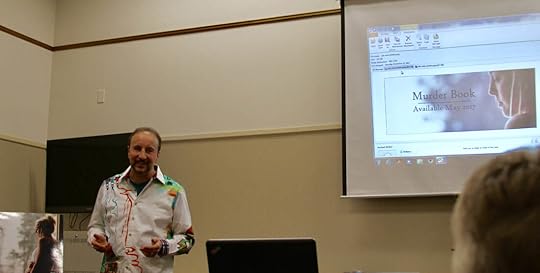
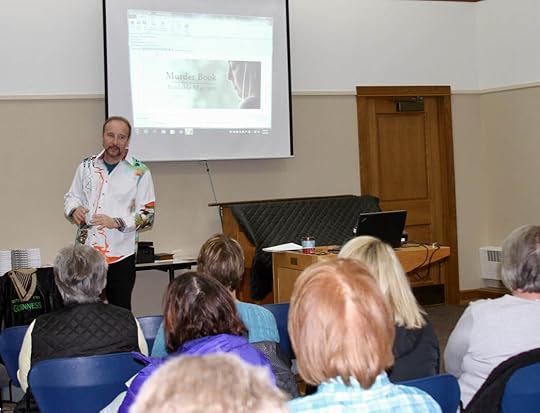 Frank speaking at the Detroit Lakes Public Library
Frank speaking at the Detroit Lakes Public Library 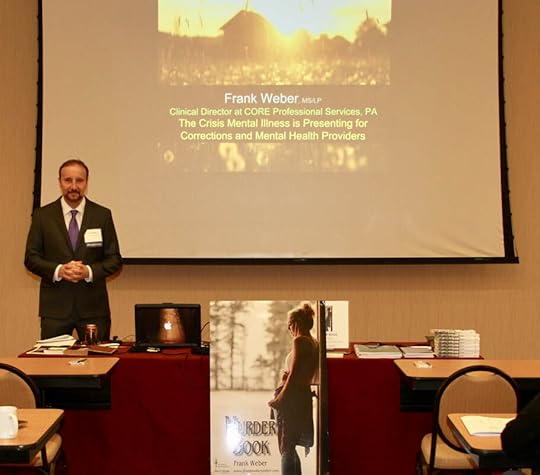 CORE Professional Services provides a variety of counseling services for couples, for depression, for parenting concerns and psychological assessments on various issues. The CORE sex offender treatment program has demonstrated success. 97% of offenders who have graduated from this program have not been convicted of an offense again, in their 22 years of programming. Frank pointed out in his presentation that CORE sites where they can offer more individual therapy in conjunction with group work they have the greatest success rates (99%), and offenders also graduate the quickest (13 months) from this program. If we had the grants to offer more individual sessions, it would cost tax payers less in the long run and it would save more victims. As a society, we need to get better at considering preventive strategies.
CORE Professional Services provides a variety of counseling services for couples, for depression, for parenting concerns and psychological assessments on various issues. The CORE sex offender treatment program has demonstrated success. 97% of offenders who have graduated from this program have not been convicted of an offense again, in their 22 years of programming. Frank pointed out in his presentation that CORE sites where they can offer more individual therapy in conjunction with group work they have the greatest success rates (99%), and offenders also graduate the quickest (13 months) from this program. If we had the grants to offer more individual sessions, it would cost tax payers less in the long run and it would save more victims. As a society, we need to get better at considering preventive strategies.
Published on April 16, 2018 06:46
April 9, 2018
Willie, Chuck and Mitch the Almighty Vice Lord Nation
 FINALISTS OF THE 28TH ANNUAL
MIDWEST BOOK AWARDS ANNOUNCED
FINALISTS OF THE 28TH ANNUAL
MIDWEST BOOK AWARDS ANNOUNCED
SAINT PAUL, MN, April 6, 2018: The Midwest Independent Publishing Association (MIPA) has announced the finalists for the 28th Annual Midwest Book Awards. The awards recognize quality in independent publishing in the Midwest. All books were copyrighted in 2017 and entered by publishers from MIPA’s 12-state Midwestern region (Illinois, Indiana, Iowa, Kansas, Michigan, Minnesota, Missouri, Nebraska, North Dakota, Ohio, South Dakota, and Wisconsin). Winners will be announced on Saturday, May 12, 2018, at the Midwest Book Awards Gala in Saint Paul.
Fiction – Mystery/Thriller
Murder Book by Frank F. Weber (North Star Press of St Cloud, Clearwater, MN)
The Bricklayer of Albany Park by Terry John Malik (Blank Slate Press. imprint of Amphorae Publishing Group, St Louis, MO)
Judge's Choice by Phil Rustad (Fast Dog Press, Plymouth, MN)
Young Adult Fiction
Murder Book by Frank F. Weber (North Star Press of St Cloud, Clearwater, MN)
Slider's Sun by Rebecca Fjelland Davis (North Star Press of St Cloud, Clearwater, MN)
Waking in Time by Angie Stanton (Switch Press/Capstone, North Mankato, MN)
Fiction – Romance
Murder Book by Frank F. Weber (North Star Press of St Cloud, Clearwater, MN)
New Penny by C.E. Sawyer (Satin Romance, imprint of Melange Books, White Bear, MN)
The Curse of the Braddock Brides by Erica Obey (Walrus Publishing, imprint of Amphorae Publishing Group, St Louis, MO) Willie Lloyd (Gang banger), Chuck Connors (Conservative republican), and Mitch Hedburg (Liberal hippie), were never pictured together, but here they are together in this blog. Mitch was born in Minnesota, Willie died in Minnesota, and Chuck came to Minnesota to watch the Twins beat the Braves in the 1991 World Series.
The Almighty Vice Lord Nation (Vice Lords for short, abbreviated AVLN) is the second largest and one of the oldest street gangs in Chicago, Illinois. Its total membership is estimated to be between 30,000 and 35,000.
Vice Lord Leader, Willie Lloyd, retired and died in Minnesota in 2015. In 1996, Chicago police had supposedly linked every murder committed in Chicago's 15th district back to orders from Lloyd.
Origin and Growth of the Vice Lords
In 1962, the Vice Lords gang was founded by several African American youths originally from the North Lawndale neighborhood of Chicago. These youths met while incarcerated in the Illinois State Training School for Boys in St. Charles (also known as the St. Charles Juvenile Correctional Facility). The name "vice" was chosen when a gang founder looked up the term in the dictionary and found the meaning as "having a tight hold".
As the original Vice Lords group was released from incarceration, they quickly began to recruit other youths from their neighborhood and began engaging in conflicts with other "clubs" from various Chicago neighborhoods. By 1964, law enforcement named the Vice Lords as a primary target for various illegal activities, including robbery, theft, assaults, battery, intimidation, extortion and specifically for their violent behavior.
In an attempt at softening their public image, one of the original 8 Vice Lords changed the gang's name to "Conservative Vice Lords" or CVL. Inc., which today serves as the foundation of the entire Vice Lord Nation. They developed new logos and advertised themselves as a community outreach group. This attempt was successful enough that the group began to receive a large amount of positive publicity from various politicians and community leaders. CVL, Inc. established a number of recreational areas for neighborhood children which were then used as gang meeting houses after they had closed for the day.
In 1970, two Vice Lord leaders, Alfonso Alfred and Bobby Gore, applied for and received a $275,000 grant from the Rockefeller Foundation. This particular era of the CVL is documented in the 1970 film, Lord Thing.
At the same time, the gang was successfully consolidating smaller neighborhood gangs (including the Cherokees, the Morphines, the Commanches, the Continental Pimps, the Imperial Chaplains, the Clovers, the Cobras, and the Braves) into the Vice Lord Nation. As a result, their numbers swelled significantly. In spite of the positive press, it was soon discovered that the Vice Lords were still violent criminals. They infused narcotics into the Lawndale neighborhood during this time, accompanied with a rapid increase in crimes involving intimidation, extortion, and murders of business owners who refused to pay for "protection."
Muslim identity adopted (1980s)
After public pressure, a federal investigation into CVL, Inc.'s use of the Rockefeller grant money was conducted and as a result, several leaders were arrested and sent to prison (including Willie Lloyd, Alfonso Alfred and Bobby Gore). The younger Vice Lord leadership attempted to conceal the gang's true intentions with another camouflage campaign, this time by adopting Islamic ideologies. By the mid-1990s, they had created a large document called Lords of Islam which addressed new rules for the gang. Their headquarters, located near Pulaski and 16th Street, is referred to as the "Holy City."
1990s to the present
In the 1990s, the Vice Lords, while engaging in the usual activities, had become much more sophisticated and expanded into mortgage fraud, credit card fraud, and money laundering.
Symbols and emblems (are seen a variety of clothing today)
Vice Lord street gangs use a variety of gang graffiti symbols or emblems to identify themselves and their gang 'turf' including:
A hat cocked to the left side (left represents the Peoples Nation alliance and cocking to the right represents the Folks Nation alliance).Rabbit wearing a bow tie (The Playboy logo), Martini glass, a glove, top hat, caneFive-point star - The five points represent (clockwise from top): Love, Truth, Peace, Freedom and Justice.Crescent moon, Scimitar, Pyramid with an eye above itPitchfork pointing down - The pitchfork is a symbol of the gang Folk NationBroken heart with wings - The heart with wings is a symbol of the Gangster Disciples, breaking it is a sign of disrespectLike the Black P. Stones, the Vice Lords often utilize pseudo-Islamic ideology and symbolism in their gang motif
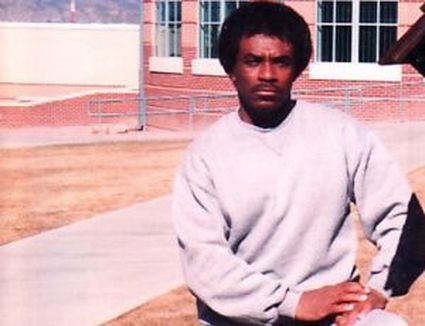 Willie Lloyd Willie Lloyd
Willie Lloyd Willie LloydAs a child with little guidance growing up on Chicago's West Side in the 1960s, Willie Lloyd joined a local gang, the Unknown Vice Lords, a faction based along 16th Street in the Lawndale neighborhood. This was the late 60s, and Willie was only 12 years old when he became a gang member. Willie was a natural leader and, by the time he was 14, he had recruited more than 1,000 followers, or "soldiers," to the gang. Willie was small in stature, at 5’4” as an adult, but ruthless in nature.
On December 5, 1971, the 20-year-old Lloyd headed to Davenport, Iowa, with several Vice Lord members. The trio rented a motel room in Davenport and broke into several rooms, holding the occupants at gunpoint while they robbed them. Police arrived on the scene shortly after, and entered into a shootout with Willie Lloyd and his companions. All three men were arrested, but not before one of Lloyd's group shot and killed a state trooper. The incident sent all three Vice Lord members to prison. Lloyd received a 25-year sentence for his role in the crime, but only served 15. Vice Lord members referred to Willie as a "cop killer," giving him the reputation of a cold, hardened criminal. Lloyd returned to Chicago after his release and declared himself boss of all local Vice Lord gangs. As the self-proclaimed "King of the Vice Lord Nation," Lloyd helped generate new methods of income for the group, including drug dealing and street taxes for anyone who wanted to do business in Vice Lord territory. Anyone who didn't pay was extorted or murdered. Lloyd was incarcerated from 1971 to 1986. While incarcerated, Lloyd wrote The Amalgamated Order of Lordism, a 61-page manifesto on the Vice Lord command structure in the prisons and on the streets.
Chicago law enforcement tried to put Lloyd back behind bars, but was unable to make any charges stick. But in January 1988, he was pulled over for a routine traffic violation. Police discovered a 9 mm and a MAC-10 submachine gun. That August, he was convicted and was incarcerated from 1988 to 1992. While serving his time at Logan Correctional Center, Lloyd still managed to effectively run the Vice Lords. By the time he was released in 1992, he had developed a heroin addiction that left members skeptical of his ability to lead. When he left prison in 1992, Willie was picked up by fellow gang members dressed in furs who were driving a convoy of five limousines.
Lloyd returned to the Westside to resume his position as Vice Lord leader, but many Vice Lord members were resentful of his attempts to re-establish control. Tyrone "Baby Tye" Williams, who had assumed power while Lloyd was in prison, helped create an opposition movement to Lloyd's leadership. To curb the new faction, Lloyd abducted Williams' brother and held him for ransom. Tyrone Williams refused to pay a $6000 debt to Lloyd, although Lloyd later stated he was paid. Williams gave Lloyd his Mercedes Benz and his brother was released. Williams then sent his soldiers to shoot up a vehicle filled with Lloyd's relatives—including his 18-month-old son. Fortunately, the child wasn’t injured beyond cuts from broken glass, but unfortunately a gang war ensued.
A few months later, Tyrone Williams' splinter gang murdered Lloyd's right-hand man in a drive-by shooting. In a separate incident, Williams' followers also executed two of Lloyd's teenaged drug dealers. They then followed Lloyd home from a court appearance and shot him, as well as his three passengers. No one was fatally injured, but all suffered gunshot wounds.
Arrested and Imprisoned Again
Lloyd was acquitted of kidnapping Tyrone William’s brother, after the judge declared the witnesses testifying against Lloyd as unreliable. But Williams, along with several members of his faction, were charged with the murders of Lloyd's associates, and for the highway assault on Lloyd's family members.
In 1994, shortly after Williams' conviction, Chicago law enforcement received a tip that Lloyd was carrying an illegal weapon. Police raided Lloyd's house, finding a 9 mm handgun, which Lloyd contended was planted. Lloyd went to prison from 1994 to 2002.
Attempts to Change His Life
After his release from federal prison in 2002, Lloyd decided to retire from his life of crime and attempt to earn a legitimate living as a mediator for gang members. He began collaborating with Chicago's School of Public Health, where he worked with the Chicago Project for Violence. He also involved himself with CeaseFire, a program that provides gang mediation efforts, and mentoring at a Westside church.
In addition, Lloyd agreed to lecture incoming freshmen in DePaul University's Discover Chicago program on the dangers of gang life. He took sociology students on a field trip to give them an inside look at gangs in their "natural habitat," and discussed the pathology of crime. When parents learned of the arrangement, however, angry phone calls to school administrators shut the program down.
Willie Lloyd's attempts to promote peace didn't resonate with his former enemies. In August 2003, Lloyd was shot six times while walking his dogs in Garfield Park in Chicago. This was the third assassination attempt on him. Lloyd survived the attack, but was paralyzed from the neck down. Lloyd believed his attackers included some of his former henchmen. During Lloyd's quarter-century as gang leader of the Vice Lords, drug deals, extortion and other crimes reportedly led to thousands of homicides. Lloyd ultimately retired to a quiet life in Minnesota, where he died at age 64 in 2015.
My feeling is that for the last 30 years we haven’t done enough to help working class and middle class Americans. The ultimate change in our inner-cities will come with legitimate job opportunities. Instead we’ve allowed wealthy Americans to manipulate the system creating a growth of franchises, corporate farms, and new stadiums, at the expense of private businesses, private farms, and our infrastructure. The good news is we can change this!
 Chuck Connors as the Rifleman
Chuck Connors as the Rifleman 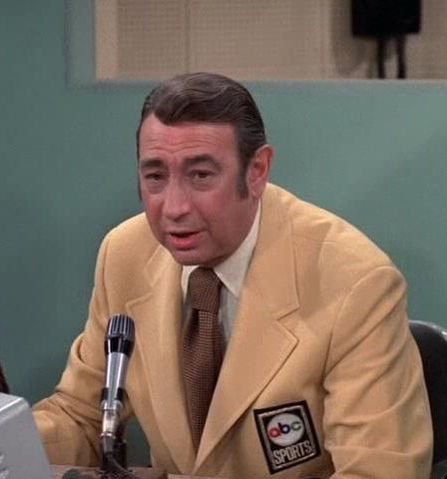 Howard Cosell Time for some levity. Howard Cosell was once “the voice of Monday Night Football.” He did a song, with Chuck Connors in Gold, on the Sonny and Cher comedy hour worth a view.
Howard Cosell Time for some levity. Howard Cosell was once “the voice of Monday Night Football.” He did a song, with Chuck Connors in Gold, on the Sonny and Cher comedy hour worth a view. Chuck Connors, famous for his role as The Rifleman, had a long career as a serious actor. He was 6’5” and an impressive man. While serving in the army and stationed in New York, he moonlighted as a professional basketball player, leading the Rochester Royals to the 1946 National Basketball League championship. Following his military discharge in 1946, he joined the newly formed Boston Celtics and became the first professional basketball player to be credited with breaking a backboard. It was actually a shot, not a slam, which may say something for his touch. Connors took a shot that caught the front of the rim of an improperly installed glass backboard during the Celtics' warmup at Boston Arena on November 5, 1946.
Connors left the team for spring training with Major League Baseball's Brooklyn Dodgers. He joined the Dodgers in 1949, but only played in one game and was sent to the minors. He joined the Chicago Cubs in 1951, playing in 66 games as a first baseman and occasional pinch hitter. Chuck Connors was drafted into American Football by the NFL's Chicago Bears, but never suited up for the team. Instead he pursued a serious acting career which lasted 40 years.
I’m not aware of either Connors or Cosell doing comedy outside of the Sonny and Cher show. Mitch Hedberg quotes:
People follow arrows. Imagine being killed by a bow and arrow. They would never solve the crime. "Look at that dead guy... Let's go that way."
I got a Do Not Disturb sign on my hotel door. It says Do Not Disturb. It's time to go with DON'T disturb. It’s been Do Not for too long. We need to embrace the contraction.
I hate sandwiches at New York delis. Too much meat on the sandwich. It's like a cow with a cracker on either side. "What would you like sir?" "A pastrami sandwich." "Anything else?" "Yeah, a loaf of bread and some other people."
I met the girl who works at the Double Tree front desk. She gave me her phone number... it's zero.
My roommate says, “I’m going to shower, does anybody need to use the bathroom? It’s like a weird quiz where the answer is revealed first.
Thanks for listening,
Frank

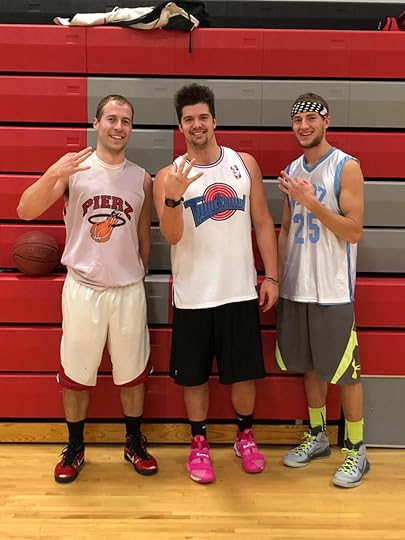 Friends from the class of 2012, put together a last minute team in the annual 3 on 3 basketball tournament in Pierz. There were 190 teams. Preston, Logan Meyer and Dylan Smieja took 3rd in the adult men’s bracket. It was fun to see friends from all over the state, including my book publicist Krista Soukup of Blue Cottage Agency, and her twin daughters playing in the tournament. Krista’s daughters team took first in their division. Adam and Dina Mertons entered their son’s team and their “Razzle Dazzle” team from Sauk Rapids won the 3rd grade division. (Pictured below)
Friends from the class of 2012, put together a last minute team in the annual 3 on 3 basketball tournament in Pierz. There were 190 teams. Preston, Logan Meyer and Dylan Smieja took 3rd in the adult men’s bracket. It was fun to see friends from all over the state, including my book publicist Krista Soukup of Blue Cottage Agency, and her twin daughters playing in the tournament. Krista’s daughters team took first in their division. Adam and Dina Mertons entered their son’s team and their “Razzle Dazzle” team from Sauk Rapids won the 3rd grade division. (Pictured below) 
 Pajaritos restaurant in St. Paul
Pajaritos restaurant in St. Paul 

 The Waldman Bar in St. Paul, built 4 years before the Civil War The Brixius and Sitzman families in the early 1980's
The Waldman Bar in St. Paul, built 4 years before the Civil War The Brixius and Sitzman families in the early 1980's  Frank
Frank  Kelly
Kelly  Brenda with Amber
Brenda with Amber  Amber
Amber  Kelly and Amber
Kelly and Amber  Brenda
Brenda  Brenda
Brenda  Pam and Red
Pam and Red  Janet and Amber
Janet and Amber  Brenda
Brenda  Pam
Pam  Roman and Mae Gross with grandchildren
Roman and Mae Gross with grandchildren  Amber
Amber  Brenda
Brenda  Brenda and Kelly
Brenda and Kelly  Janet and Kelly
Janet and Kelly  Janet and Amber
Janet and Amber  Kelly
Kelly  Brenda
Brenda  Brenda, Kelly, and Pam
Brenda, Kelly, and Pam  Frank and Brenda
Frank and Brenda  Rod with Amber
Rod with Amber  Rod with Kelly
Rod with Kelly
Published on April 09, 2018 06:43
April 4, 2018
Easter
 A picture I took of Pope Francis in Spring 2016 Frank is speaking on Murder Book and forensic psychology April 9, 2018 at the
Detroit Lakes Public Library
from 7:00 to 8:00 pm. Frank will be available before and after his presentation for anyone who wants to purchase a personally signed book. The library presentation was arranged by Deb Wahl, who has a Pierz connection. Deb is well read, and was one person who knew the case Murder Book was based on.
A picture I took of Pope Francis in Spring 2016 Frank is speaking on Murder Book and forensic psychology April 9, 2018 at the
Detroit Lakes Public Library
from 7:00 to 8:00 pm. Frank will be available before and after his presentation for anyone who wants to purchase a personally signed book. The library presentation was arranged by Deb Wahl, who has a Pierz connection. Deb is well read, and was one person who knew the case Murder Book was based on.Deb Wahl, Public Services Supervisor, Detroit Lakes Public Library graduated from Healy High School in Pierz in 1972. Her parents are Ken and Dolores Schmitt. Deb’s sister is Stephanie Fyten, married to Mark Fyten, in Pierz.
Deb graduated from University of North Dakota with a degree in Recreation Therapy. She worked at the Fergus Falls Regional Treatment Center as a Recreation Therapist for 24 years and then several years at Prairie St. John's in Fargo. In 2002 Deb took part in a distance learning program out of Emporia State University Kansas to get her Master's degree in Library Science. She began working at the Detroit Lakes Public Library in 2006 where she provided reference services, planned adult programming and supervised staff. Deb met her husband in Fergus Falls and they have been married for 37 years, and now have 3 grown children and 5 “wonderful” grandchildren. Anybody who remembers her from high school will remember she loves to read. Deb also enjoys walking, learning new things and being with friends. Her work creates a great opportunity to meet new people by planning and carrying out adult events for the Library.
Jean Hilliard Returns from the Dead
When Jean Hilliard was 19, her car went in the ditch in 22 below weather on a rural road near Lengby, Minnesota. She tried walking to a neighbor but collapsed on the steps and wasn’t discovered until six hours later. Jean was frozen solid. When they brought her to the hospital they couldn’t even get a thermometer into her frozen body. When they finally were able to get a heartbeat, her heart was only offering 8 beats a minute. Her family sat and prayed by her and 6 hours later she began gurgling. Her legs unthawed on the third day. The doctors told the parents that they thought her legs and hands would have to be amputated. Jean Hilliard left the hospital, after 49 days, without a scratch, her body fully functioning, and with no loss of limbs. Nobody can explain why she lived or completely healed as she did. Now she works at a central Minnesota Walmart. (I’m not including the city as I don’t want her bothered at work.) Jean didn’t have an epiphany or see a bright light. She just fell asleep. The thought of it sends a shudder through me. Jean does occasionally speak at churches.
There was some debate about Pope Francis’ quote about the existence of hell, or lack thereof. I like Pope Francis, and honestly I don’t know if he’s right. I’m not sure if it’s scarier that people who don’t believe in God go to hell, or just disappear. I am grateful for the wonderful Easter celebrations that occurred all over. I thought the live performance of Jesus Christ Superstar, featuring John Legend and Sarah Bareilles was incredible—great vocals, great rock guitar performance. My only minor criticism is that I would have replaced Alice Cooper as Herod. (And I liked Alice Cooper’s “Be My Lover” back in the 1970’s.) Cooper was the only one in the musical who couldn’t sing anymore, and he had a song from Andrew Lloyd Weber’s masterpiece that I liked, but Cooper had to talk parts of it because of his current limited vocals.
I always have to add a little about forensics. California Proposition 69 was on the November 2, 2004 election ballot in California as an initiated state statute, and was approved. Proposition 69 requires the collection of DNA samples from all felons, and from adults and juveniles arrested for or charged with specified crimes. It was appealed by attorneys as violating the rights of prisoners, but still upheld by the Supreme court. This led to the resolution of many cold cases in California, I believe the number was over 5000. However, since it was approved, the state has redefined felonies so that fewer people are convicted of felonies and they can avoid DNA testing. In my opinion, if you go to prison, we should be able to take your DNA. I feel like if you require being locked in a cell for the safety of the rest of us for one year or longer (a requirement of a prison sentence), we should be able to check into other crimes you’ve committed—but that’s just me. Proposition 69 in 2004 was set in motion by California’s inability to catch the Golden State Killer, who was responsible for 12 murders and over 50 rapes in California from 1976 to 1986. They have his DNA, and would like the freedom to check it with all prisoners. (A story for another blog.) The Golden State Killer was never apprehended.
On the lighter side, Michael Jackson was an incredibly talented musician. This was my favorite Jackson 5 song. Nice outfits too! Mitch Hedburg was my favorite comedian. He ultimately died from an overdose. I think a lot of comedy comes from sadness, and sometimes there is nothing more scary than being exactly who you are. Mitch was an addict. Damn funny, but unfortunately he couldn’t shake that vice. He once said, “I used to do drugs. I still do, but I used to too.”
Quotes:
I'd like to see a forklift lift a crate of forks. It'd be so damn literal! You are using that machine for its exact purpose! Mitch Hedburg
Animal crackers fool people into thinking all animals taste the same. "What does a giraffe taste like?" "A hippopotamus!" Mitch Hedburg
I want to get a job naming kitchen appliances. That seems easy, you know? Refrigerator, toaster, blender. You just say what the thing does, then you add "er."
The Diet Dr. Pepper commercial says “it tastes just like Dr. Pepper.” Does that mean they messed up? Mitch Hedburg
Sex is like boxing. If you both haven’t given consent, one of you is committing a crime. John Oliver
Thanks for listening,
Frank
 8 inches of snow Friday night in Minnesota
8 inches of snow Friday night in Minnesota  Here are some pictures of our family in 1997 and 1998. Every Easter we would get baby chicks raise them until the end of summer and give them to Paul Tschida where they lived in chicken heaven (a barn full of chickens and chicken feed).
Here are some pictures of our family in 1997 and 1998. Every Easter we would get baby chicks raise them until the end of summer and give them to Paul Tschida where they lived in chicken heaven (a barn full of chickens and chicken feed). Nicolette
Nicolette  Frank standing on the world’s longest expansion bridge in Vancouver Canada in 1998. The Capilano Suspension Bridge, hanging 450 feet across and 230 feet above Capilano River.
Frank standing on the world’s longest expansion bridge in Vancouver Canada in 1998. The Capilano Suspension Bridge, hanging 450 feet across and 230 feet above Capilano River.  Shane
Shane  Shane with classmates Aaron, Peter, Crescence, and Sarah
Shane with classmates Aaron, Peter, Crescence, and Sarah 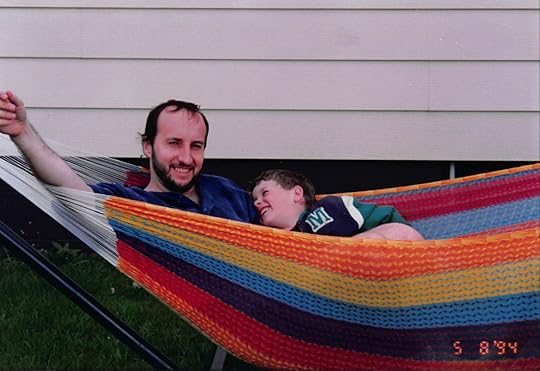 Frank and Shane
Frank and Shane  Preston
Preston 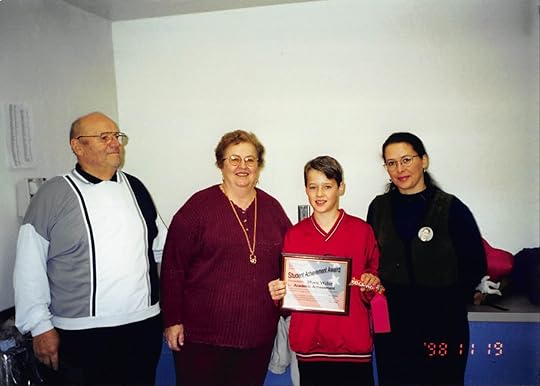 Leo, Rosetta, Shane, and Brenda
Leo, Rosetta, Shane, and Brenda 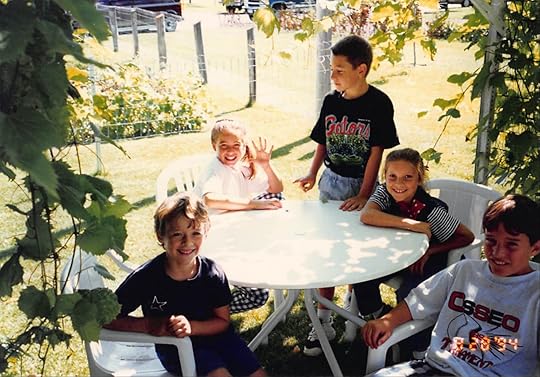 Shane, Kate Weber, Mitch Weber, Nicolette, and Jay Weber
Shane, Kate Weber, Mitch Weber, Nicolette, and Jay Weber 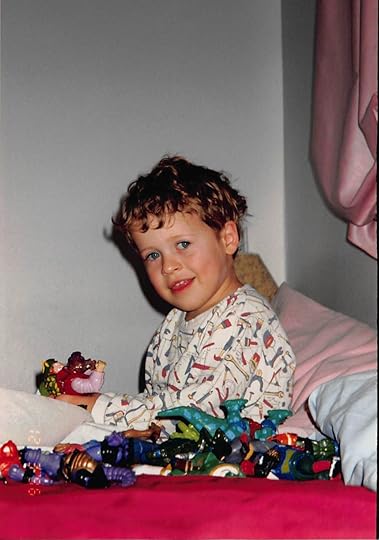 Preston
Preston 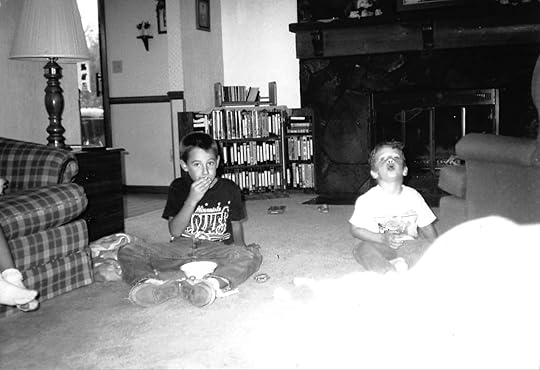 Mitch and Shane
Mitch and Shane  Nicolette
Nicolette  Shane
Shane  Nicolette, Preston, and Shane
Nicolette, Preston, and Shane  Nicolette
Nicolette  Nicolette and Shane
Nicolette and Shane  Shane, Nicolette, and Preston
Shane, Nicolette, and Preston  Shane
Shane 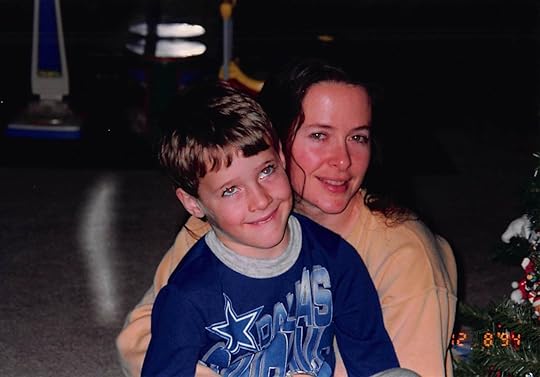 Shane and Brenda
Shane and Brenda  Preston
Preston  Shane, Nicolette, and Preston
Shane, Nicolette, and Preston  Shane and Preston
Shane and Preston  Brenda, Shane, and Nicolette
Brenda, Shane, and Nicolette 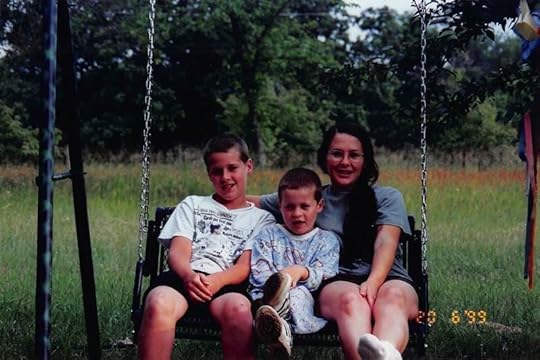 Shane, Preston, and Brenda in our backyard
Shane, Preston, and Brenda in our backyard  Rod Brixius with Nicolette
Rod Brixius with Nicolette  Nicolette, Preston, and Shane
Nicolette, Preston, and Shane 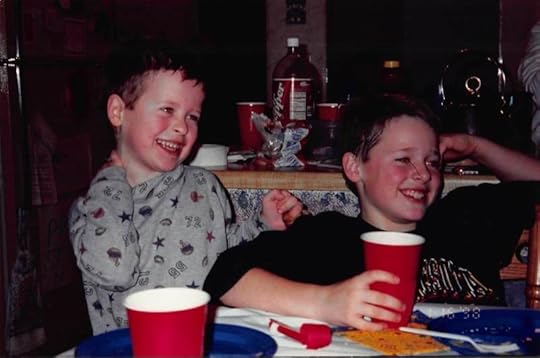 Preston and Shane
Preston and Shane  Preston
Preston
Published on April 04, 2018 14:11
March 27, 2018
Self-Esteem
 Olivia & Preston and Frank & Brenda enjoyed an Escape room in Minneapolis last weekend, and managed to escape with 10 minutes still left. The day you graduate from high school is the last day you’ll be expected to be good at everything.
Olivia & Preston and Frank & Brenda enjoyed an Escape room in Minneapolis last weekend, and managed to escape with 10 minutes still left. The day you graduate from high school is the last day you’ll be expected to be good at everything.
Self-esteem is your description of your worth.
A recent national study suggests it declines when you start school, and continues to decline until you graduate from high school. One of the least successful efforts to improve self-esteem was giving all students a reward regardless of their performance. If you want honestly want to improve your self-esteem you need to take action, such as:
learn something newexercisehelp someone with a tasktalk to someone you usually don’t talk to, even if they’re difficult visit a grandparent
If you think about it, students are asked to compete on every ability throughout the day. The day you graduated from high school, was the last day you’ll be expected to be good at everything. After high school, no one will say, “Sure you’re a nice person, but how far can you throw a ball?” or, “Sure you can weld, but do you know why George Washington crossed the Delaware?”
With that said, everything you learn will be useful at some point in your life, even if it doesn’t seem to apply anywhere in the moment. I love different types of music. I also like to visit modern art museums when I go to new cities, as often when I leave I have solutions to problems I’m dealing with. Typically, I don’t know where the insight came from, but simply seeing new creative ideas started me looking at it differently. Learning itself creates new neural pathways in your brain, so the more you learn, the more you are capable of learning.
I will now share how a rich man ruined a teenage girl by giving her money rather than offering her an opportunity to improve her self-esteem.
Victoria Lynn "Vicki" Morgan (August 9, 1952 – July 7, 1983)
Aspiring to be an actress, in 1968, 16-year-old Morgan ran away from home, finding work as an usher at Grauman's Chinese Theatre in Los Angeles. She soon married 47-year-old Earl Lamb. She was still a teenager when she met 54-year-old Alfred Bloomingdale, a married multi-millionaire from the famous department store family. Alfred was a sexually disturbed man with a ton of money that kept him out of trouble. Vicki Morgan became Bloomingdale's mistress, and he would have her watch as he performed bondage, dominance, and sadomasochism on multiple sex workers. When Vicki was 18, Bloomingdale offered her husband, Ear Lamb, a large cash payment to end his marriage with Vicki. Vicki then entered a full relationship with Bloomingdale, who set her up in an apartment. It’s important to note that Alfred was married, and his wife, Betsy, was a close friend of Nancy Reagan. Alfred was a major backer of Ronald Reagan and was on his advisory board. (I don’t blame the Reagans for any of Bloomingdale’s lunacy. It was during an era when people knew very little about people close to them, and even if they did, Alfred is still responsible for his choices.)
Alfred Bloomingdale basically ruined this young girl’s life. He convinced Vicki Morgan to come with him to a hideout in the Hollywood hills to watch him play "the game" -- tying up naked prostitutes, flailing them with his belt while taking the teenager over his knee and spanking her vigorously. This was the beginning of an off-and-on affair that lasted more than a decade. As part of her later palimony suit, Vicki would reported she weaned him from his destructive BDS&M activities by making him adjust to regular adultery. Vicki had her own relationships and biographies of her suggest she used sex as a sort of charge card to get what she wanted. She had brief relationships with Cary Grant, Morocco's King Hassad, high-flying entrepreneur Bernie Cornfeld, and a lesbian fling with an exiled Saudi princess. But the dominant factor was always Alfred Bloomingdale -- as his failing health and suspicious wife allowed. Alfred made it clear that he was her sugar daddy, and she was his servant. Alfred bought her a sports car, paid her rent, and paid her $1800 a month. His wife finally had her fill of the affair after Alfred purposely sat in plain sight with Vicki in his car outside of Betsy’s hair salon, while she was having her hair done, and had Vicki perform a sexual act on him.
 Vicki Morgan
Vicki Morgan 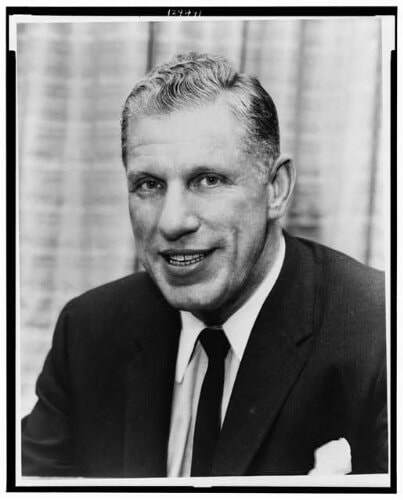 Alfred Bloomingdale Alfred Bloomingdale died in 1982, and that ended the money flow. Vicki Morgan began a descent into abusing pills and paranoia. She thought she was under surveillance and threatened to take down the government. In chemical dependency treatment she met the man who would eventually kill her--Marvin Pancoast, a mentally ill gay man who was obsessed with Vicki’s stories about Alfred Bloomingdale. (I only mention Pancoast’s sexual orientation to clarify this wasn’t a love affair.) Marvin would later say, “Vicki was special. You just couldn't get enough of her." Marvin moved in with her. They both abused drugs--neither worked. Marvin later would say her narcissism and shallowness drove him so crazy that he beat her to death with a baseball bat.
Alfred Bloomingdale Alfred Bloomingdale died in 1982, and that ended the money flow. Vicki Morgan began a descent into abusing pills and paranoia. She thought she was under surveillance and threatened to take down the government. In chemical dependency treatment she met the man who would eventually kill her--Marvin Pancoast, a mentally ill gay man who was obsessed with Vicki’s stories about Alfred Bloomingdale. (I only mention Pancoast’s sexual orientation to clarify this wasn’t a love affair.) Marvin would later say, “Vicki was special. You just couldn't get enough of her." Marvin moved in with her. They both abused drugs--neither worked. Marvin later would say her narcissism and shallowness drove him so crazy that he beat her to death with a baseball bat.An attorney, Robert Steinberg, attempted to get a settlement from the Bloomingdales and made headlines by claiming he had gotten a hold of some "sex tapes" Vicki had left behind. Robert was asked to produce them, but claimed they were stolen from his home the night before he was going to turn them in. Steinberg was convicted of filing a false police report with regard to this. Although there have been occasional conspiracy theories the government had her killed, it’s important to note that people who have investigated the case, and the killer, report Marvin beat her to death with a baseball bat in a drug induced state over money and because he felt she was ordering him around. Marvin had also recently discovered he had AIDS. Vicki’s attorney proceeded with the palimony suit on behalf of Vicki’s son Todd, who was born in 1969. Vicki Morgan had a contract in which Bloomingdale promised to give her $240,000, but instead gave her $40,000. The judge ruled the agreement unenforceable as it was for the illegal act of "sex for hire." In December 1984, the jury awarded her estate the remaining $200,000 (the equivalent of $471,000 today).
 I reflect on the case with frustration that a man with almost unlimited resources, destroyed this young woman, when it would be so easy to help her. This will be his legacy.
I reflect on the case with frustration that a man with almost unlimited resources, destroyed this young woman, when it would be so easy to help her. This will be his legacy. Quotes from Mitch Hedberg:
I’m a heroine addict. I need to be with a woman who saved somebody’s life.
My manager’s cool, but he gets concerned, he says, "Mitch, don't use liquor as a crutch." I can't use liquor as a crutch... because a crutch helps me walk.
Snake eyes. It's a gambling term. Or it's an animal term, too.
I was walking with a friend who said, “Mitch, I hear music.”
I told him, “There’s nothing special about you. We all do.”
Thanks for listening,
Frank

 Pictures I took on my travels through rural Minnesota last week
Pictures I took on my travels through rural Minnesota last week 
 Lakes and Legends Taproom
Lakes and Legends Taproom 



 Frank & Brenda and Preston & Olivia enjoyed a great meal and a cold brew at The Local Irish Pub in Minneapolis
Frank & Brenda and Preston & Olivia enjoyed a great meal and a cold brew at The Local Irish Pub in Minneapolis 
 Frank and Rosetta have gotten together the last couple Sundays to play some music.
Frank and Rosetta have gotten together the last couple Sundays to play some music.  Frank speaking to the Books and Beverages book club in Hastings on Murder Book Shane and Rachael are expecting their first child. I have included some pictures of Shane as a child as a prelude.
Frank speaking to the Books and Beverages book club in Hastings on Murder Book Shane and Rachael are expecting their first child. I have included some pictures of Shane as a child as a prelude. 










Published on March 27, 2018 18:00
March 20, 2018
Who Was Mark Felt and Why Should We Care? (1913–2008)
 Frank with granddaughter, Kaycee This is my response to the Washington Post's call for an investigation into the FBI. While I am an advocate of accountability, I would like to remind people that a generation ago the Washington Post became famous for getting a high level FBI agent to leak information. I guess it comes down to this question: Should a government employee turn to the media, if she/he feels the President is violating the rights of American citizens? Perhaps the answer is under extraordinary circumstances. I am not implying Donald Trump did anything wrong. I am pointing out that the election investigation occurring right now is the same controversy we were dealing with in 1972. Did a presidential candidate use questionable means to influence the results of the presidential election?
Frank with granddaughter, Kaycee This is my response to the Washington Post's call for an investigation into the FBI. While I am an advocate of accountability, I would like to remind people that a generation ago the Washington Post became famous for getting a high level FBI agent to leak information. I guess it comes down to this question: Should a government employee turn to the media, if she/he feels the President is violating the rights of American citizens? Perhaps the answer is under extraordinary circumstances. I am not implying Donald Trump did anything wrong. I am pointing out that the election investigation occurring right now is the same controversy we were dealing with in 1972. Did a presidential candidate use questionable means to influence the results of the presidential election?William “Mark” Felt was an associate director of the FBI who later was the secret informant known as “deep throat” who broke the Watergate story to reporters. In 1972, Washington Post journalists Bob Woodward and Carl Bernstein received information from a high-level government official who was given the moniker "Deep Throat." The evidence eventually led to President Nixon’s resignation in August 1974. In a 2005 magazine article, "Deep Throat" was revealed to be William Mark Felt. People argue over whether Mark Felt sharing information was the result of a need for an ethical man to hold people accountable, or was it his resentment for being passed over by the Nixon administration to be the FBI Director.
William Mark Felt was born on August 17, 1913, in Twin Falls, Idaho. Felt was the son of carpenter Mark Earl Felt and homemaker Rose Dygert. Felt married Audrey Robinson of Gooding, Idaho, whom he had known when they were students at UI. She had come to Washington to work at the Bureau of Internal Revenue. Upon graduation, Felt took a position at the Federal Trade Commission but did not enjoy the work. His workload was very light, and he was assigned a case to investigate whether or not a toilet paper brand, called "Red Cross," was misleading consumers into thinking it was endorsed by the American Red Cross. Felt wrote in his memoir:
My research, which required days of travel and hundreds of interviews, produced two definite conclusions:
1. Most people did use toilet tissue.
2. Most people did not appreciate being asked about it.
That was when I started looking for other employment.
He applied for a job with the FBI in November 1941 and was accepted. His first day at the Bureau was January 26, 1942. Felt's performance caught the attention of then-director J. Edgar Hoover. After serving as a top agent in places such as Seattle, New Orleans, Los Angeles and Salt Lake City, Felt returned to Washington in 1962, where he helped oversee training at the FBI Academy. (Keep in mind Hoover has been criticized for private files he kept on citizens.) In 1971, Hoover promoted Felt to deputy associate director, the third highest position in the FBI. In May of 1972, Hoover died in his sleep and President Richard Nixon appointed L. Patrick Gray as acting director of the FBI. Felt was assigned to the post of associate director shortly thereafter, becoming second in command at the bureau. Some theorize that Felt harbored resentment over being passed over as Director of the FBI.
Mark Felt led an investigation of a group called the Weatherman Underground in the early 1970’s. (The weatherman took their name from a line in a Bob Dylan song which stated, “You don’t need a weatherman to know which way the wind blows.” The Weather Underground had planted bombs at the Capitol, the Pentagon, and the State Department building. Felt, along with Edward S. Miller, authorized FBI agents to break into homes secretly in 1972 and 1973, without a search warrant, on nine separate occasions. These kinds of FBI operations were known as "black bag jobs." The break-ins occurred at five addresses in New York and New Jersey, at the homes of relatives and acquaintances of Weather Underground members. They did not contribute to the capture of any fugitives. The use of "black bag jobs" by the FBI was declared unconstitutional by the United States Supreme Court. Felt publicly stated he had ordered break-ins, and recommended against punishment of individual agents who had carried out orders. Felt commented on Face the Nation that he would probably be a "scapegoat" for the Bureau's work, but added, "I think this is justified and I'd do it again tomorrow." He justified the break ins as protecting the "greater good."
The criminal case against the Weatherman was dismissed because the FBI had conducted illegal activities, including unauthorized wiretaps, break-ins, and mail interceptions. The lead federal prosecutor on the case, William C. Ibershof, claims that Mark Felt and Attorney General John N. Mitchell initiated these illegal activities that tainted the investigation. On April 10, 1978, a federal grand jury charged Felt with conspiracy to violate the constitutional rights of American citizens by searching their homes without warrants.
The indictment charged violations of Title 18, Section 241 of the United States Code and stated Felt and the others: "Did unlawfully, willfully, and knowingly combine, conspire, confederate, and agree together and with each other to injure and oppress citizens of the United States who were relatives and acquaintances of the Weatherman fugitives, in the free exercise and enjoyments of certain rights and privileges secured to them by the Constitution and the laws of the United States of America." Felt stated, “I was shocked that I was indicted. You would be too, if you did what you thought was in the best interests of the country and someone on technical grounds indicted you.” Former President Richard Nixon testified on Felt’s behalf, stating that presidents since Theodore Roosevelt have requested investigations into citizens. (This was a noble gesture by Nixon, when you consider Nixon ultimately fired Felt suspecting he was leak.) The case eventually ended when Mark Felt was pardoned by President Ronald Reagon.
Watergate
On June 17, 1972, five men were arrested for breaking into Democratic National Committee headquarters in the Watergate Hotel in Washington D.C. Two of the robbers had checks in their billfolds from the Committee to re-elect the President (Nixon). As second in command, Felt was asked to head the bureau's investigation into the break-in in order to determine the extent, if any, of White House involvement.
On June 19, 1972, Washington Post journalists Bob Woodward and Carl Bernstein received information from a high-level government official who was given the moniker "Deep Throat." During the phone call, Deep Throat told the journalists that a former CIA agent and Nixon staff member Howard Hunt was definitely involved in the Watergate scandal. Felt continued to guide the investigation by letting the reporters know when they were moving in the wrong direction. The tips gave journalists enough leverage to call for a widespread investigation of the White House's activities. The televised trials in 1973 revealed a string of criminal acts involving campaign fraud, political espionage, breaking and entering, and illegal wiretapping that all led back to President Nixon and his staff. The evidence eventually led to Nixon’s resignation on August 9, 1974. Yet even after the trial, the identity of the man known as Deep Throat remained a mystery.
Felt retired from the FBI on June 22, 1973. After he suffered a stroke and encountered serious illness, his daughter, Joan, persuaded him to go public. On May 31, 2005, he broke his silence in an issue of Vanity Fair. The article revealed Felt's identity as Deep Throat, and Woodward and Bernstein later confirmed this to be fact.
On December 18, 2008, Mark Felt died in his sleep after suffering from congestive heart failure. He and his wife, Audrey, who died in 1984, had two children, Mark and Joan. They lived in Santa Rosa, California. Congratulations to Sauk Centre Mainstreeters girls basketball state championship--the school’s first state championship in 30 years. Sauk Centre is the first high school basketball team to win 33 games in a season, with 0 losses. It was 55-52 over Roseau with 2 minutes left. Sauk Centre scored 8 more and Roseau didn’t score again. I have to tell you that I have a number of the Pierz girls basketball players in my college class, and I told them one game day this winter, “I want to see you come up with an upset tonight. I’ll only ask this of you once.” I had no idea of who they were playing. The response was, “Okay, but do you realize we are playing the #1 ranked team in the state and they are undefeated?” Well, Pierz didn’t beat Sauk Centre either.
Quotes:
All of the quotes below are from Jim Gaffigan:
"You ever read a book that changed your life? Me neither."
"I love how New York is so multicultural. I wish I was ethnic, I'm nothing. Because if you're Hispanic and you get angry, people are like, 'He's got a Latin temper!' If you're a white guy and you get angry, people are like, 'That guy's a jerk.'"
"It would be kind of embarrassing trying to explain what an appetizer is to someone from a starving country though. 'Yeah the appetizer, that's the food we eat before we have our food...No no you're thinking of dessert, that's food we eat after we have our food.'"
"But truly, women are amazing. Think about it this way: a woman can grow a baby inside her body. Then a woman can deliver the baby through her body. Then, by some miracle, a woman can feed a baby with her body. When you compare that to the male’s contribution to life, it’s kind of embarrassing, really."
"The Pearly Gates. Am I the only one who finds it odd that Heaven has gates? What kind of neighborhood is Heaven in?"
Thanks for listening,
Frank


 Photos taken East of Buckman this past week
Photos taken East of Buckman this past week 



 We are expecting a couple of girls into our family in 2018, so I thought I’d share some pictures of family, starting in 1985.
We are expecting a couple of girls into our family in 2018, so I thought I’d share some pictures of family, starting in 1985. 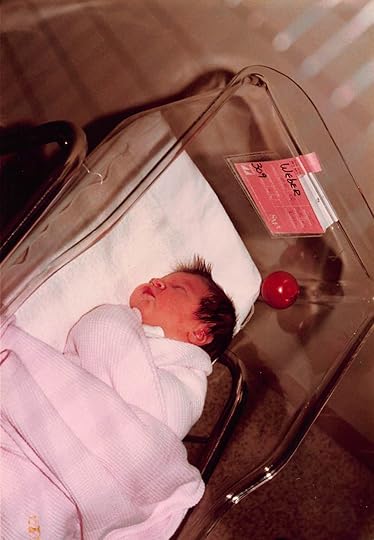 Nicolette Mae Weber
Nicolette Mae Weber 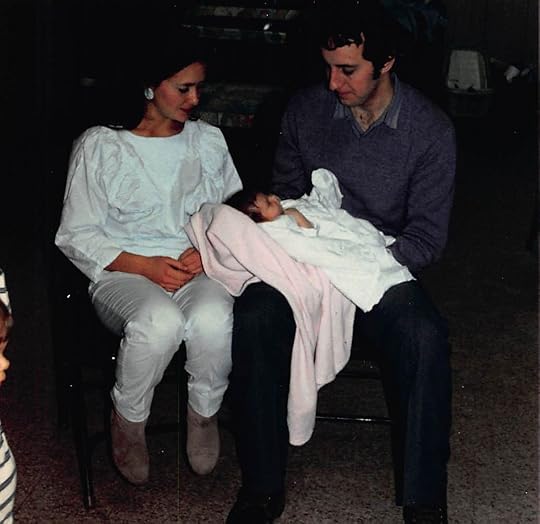 Brenda, Frank, and Nicolette
Brenda, Frank, and Nicolette 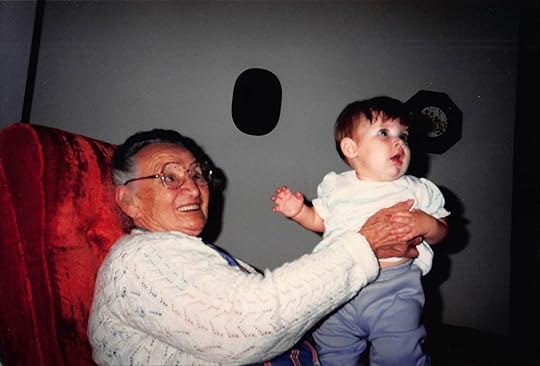 Nicolette with her Great Grandma Elizabeth Weber
Nicolette with her Great Grandma Elizabeth Weber 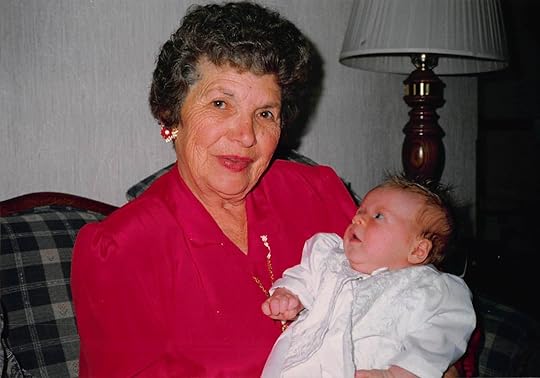 Preston with Great Grandma, Mae Gross
Preston with Great Grandma, Mae Gross  Brenda
Brenda  Frank
Frank  Preston
Preston 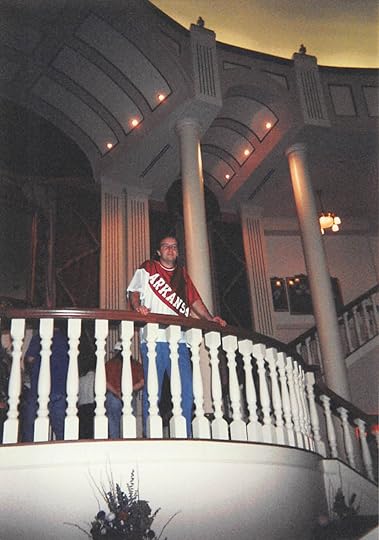 Frank
Frank  Shane and Nicolette
Shane and Nicolette  Preston, Shane, and Nicolette
Preston, Shane, and Nicolette  Preston and Shane with Grandma, Janet Brixius
Preston and Shane with Grandma, Janet Brixius  Shane
Shane  Shane
Shane 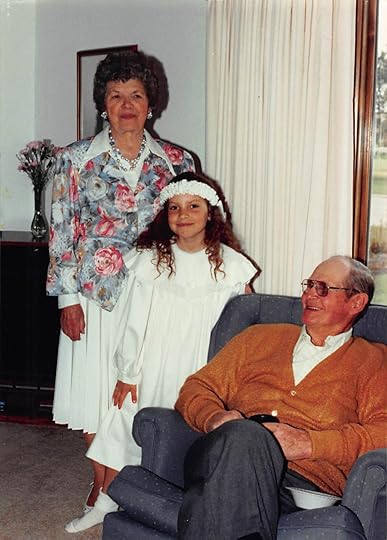 Nicolette with great grandparents, Mae and Roman Gross
Nicolette with great grandparents, Mae and Roman Gross  Shane and Nicolette
Shane and Nicolette 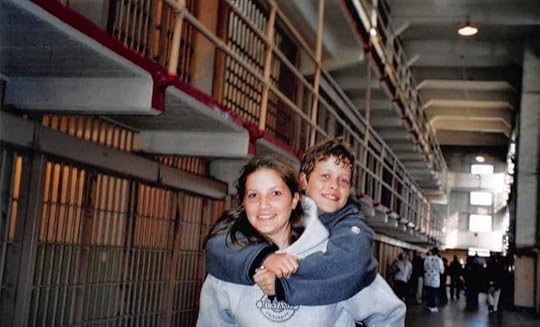 Nicolette and Preston
Nicolette and Preston 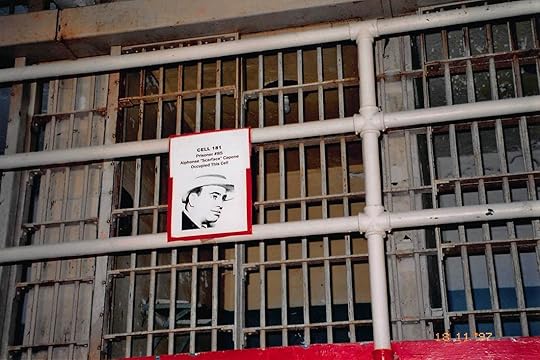
 Frank, Shane, Preston, and Nicolette
Frank, Shane, Preston, and Nicolette  Nicolette
Nicolette  Nicolette with friend, Carli
Nicolette with friend, Carli  Nicolette
Nicolette  Shane, Preston, and Nicolette
Shane, Preston, and Nicolette 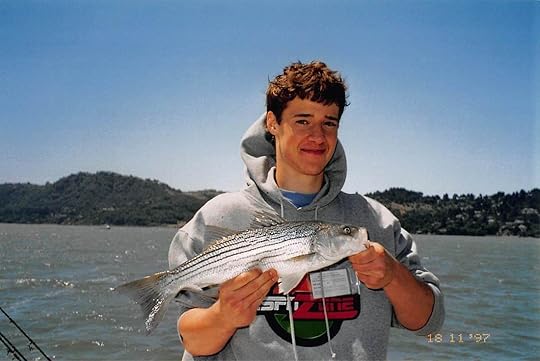 Shane
Shane
Published on March 20, 2018 00:00
March 12, 2018
T. Eugene Thompson’s Crime was Eclipsed by the Assassination of John F. Kennedy
 Frank in Galveston, Texas I have recently received a number of positive responses from Dehler descendants on the Richard Dehler homicides article I blogged on in September of 2017. The general consensus is that after years of rumors, it was nice having some information about what exactly took place. I personally feel it’s easier to bring resolution to a frustrating situation once you have the facts. Today’s blog is about the attorney who defended Richard Dehler, named T. Eugene Thompson, who later went to prison himself for murder. T. Eugene “Cotton” Thompson was a high stakes attorney, candidate for governor, and criminal. He was referred to as “Cotton” because of his white-blonde hair. The murder of his wife, Carol, was one of the most bizarre murders ever. The only reason it didn’t get large-scale national attention was because John Kennedy’s assassination occurred during the middle of Thompson’s trial. Carol’s murder occurred at the family’s home at 1720 Hillcrest Avenue in an area of St. Paul know as Highland Park. It was brutal and bloody.
Frank in Galveston, Texas I have recently received a number of positive responses from Dehler descendants on the Richard Dehler homicides article I blogged on in September of 2017. The general consensus is that after years of rumors, it was nice having some information about what exactly took place. I personally feel it’s easier to bring resolution to a frustrating situation once you have the facts. Today’s blog is about the attorney who defended Richard Dehler, named T. Eugene Thompson, who later went to prison himself for murder. T. Eugene “Cotton” Thompson was a high stakes attorney, candidate for governor, and criminal. He was referred to as “Cotton” because of his white-blonde hair. The murder of his wife, Carol, was one of the most bizarre murders ever. The only reason it didn’t get large-scale national attention was because John Kennedy’s assassination occurred during the middle of Thompson’s trial. Carol’s murder occurred at the family’s home at 1720 Hillcrest Avenue in an area of St. Paul know as Highland Park. It was brutal and bloody. Carol Swoboda Thompson, 34, was a housewife and the mother of four young children, ages 6 to 13, when she was slain on the morning of March 6, 1963. Carol was, in many ways, the prototypical early 1960s wife and mother. She was active in her church (Edgecumbe Presbyterian), active in the Scouts, and did all the things that stay-at-home mothers did in those days. She had a million friends with whom she played bridge and got together for coffee parties.
T. Eugene Thompson had an affair with his secretary, Jacqueline Oleson, whom he brought on trips when he went to the resorts around the Brainerd Lakes Area. As a matter of fact, a number of people who knew him in the Brainerd area at the time thought Jacqueline was his wife.
T. Eugene Thompson set up a "Dial M for Murder" scenario, straight from Hitchcock’s famous movie. Thompson had gone through hitman and former prizefighter Norman Mastrian, who hired the killer, Dick Anderson, to do the job. Anderson was to hide in the basement after the kids left for school, when Thompson would call his wife on the phone, as the phone was on the wall close to the basement steps. When Thompson called, the killer was supposed to approach her from behind and strike her. But the steps creaked as Anderson stepped up, so he waited until she went upstairs. Anderson entered the bedroom and told her to lay on the bed while he robbed the place. Dick Anderson hit her in the back of the head, to knock her out. He then stripped her and brought her to the bathroom to drown her. T. Eugene Thompson had left the bathtub full of water. Thompson also told his son to chain lock the living room door before he left for school.
Carol Swoboda Thompson fought a tough battle. Carol reawakened in the tub, as Anderson was attempting to drown her. Carol wrestled free from the bath tub, but unfortunately, first ran to her bedroom to grab a robe instead of escaping outside naked. Anderson caught her at the door, while Carol was trying to undue the chain.
Anderson tried to shoot her, but the gun misfired, so he beat in her face with the butt of a Luger pistol. The gun broke apart during the beating. Anderson then ran to the kitchen and found a knife and stabbed her more than 50 times. The blade finally broke off in her neck. Finally believing he had accomplished the hired hit, Anderson went to the bathroom to wash the blood off his body. When he returned to where he stabbed her, Carol was gone.
Carol Thompson was able to stagger to where a neighbor was home, three houses down, for help. When the neighbor answered the door, she found a woman standing barefoot, blood streaming from her head and face. It was said, “She was so bloody, we didn’t even know who she was.” She gasped, “I’ve got a knife in my throat. A man did it… He came to the door. Won’t you please help me?” Carol Thompson was rushed to Ancker Hospital, where surgeons took a 3-inch knife blade from her throat, but she died three hours later.
Thompson took out 8 separate insurance policies on his wife in the previous year.
After Thompson’s release from prison, the family held their own hearing, allowing their father to bring anyone in to prove his innocence to them. All of the children left convinced their father had killed their mother.
The hitman was former professional boxer, Norman Mastrian. Norman Mastrian graduated from Thomas Edison High School in Minneapolis, where he earned the nickname “punchy,” for constantly provoking fights. Following high school, he joined the Navy and then attended St. Paul’s Macalester College on the GI bill. Attending at the same time were T. Eugene Thompson and Carol Sowobada (who later became Thompson’s wife). Mastrian was a tough bird. In his last professional fight he had been knocked down 11 times, but kept getting back up. He was married twice but was most known for his involvement with “the underworld.” In 1962, Mastrian was arrested as a suspect in the execution style murder of Twin Cities restaurant owner Eddie James, who was a witness for the police. Mastrian hired T. Eugene Thompson to defend him, and Thompson got Mastrian cleared of the charges. It’s hard to say Mastrian was innocent, when later Thompson would go to Mastrian to have his wife killed. Norman Mastrian was convicted of being the middle man in Carol Thompson’s murder, and was sentenced to 20 years in prison. Mastrian was released in February of 1983, and arrested again in 1986 for possession of stolen fur coats that he intended to exchange for cocaine. After serving 6 years in prison, he returned to Northeast Minneapolis, where he died in 2007.
The power of family: T. Eugene’s son, Jeff Thomson, is a respected judge who invited his father to attend the celebration of his promotion, since his father was out of prison at the time. Jeff’s explanation was, “He is my father.” Jeff also stated that he felt the court made the proper decision in his father’s case. T. Eugene Thompson died in 2015. Jeff Thomson stated at his father’s funeral, "T. Eugene was a multi-faceted person. Oscar Wilde said, 'Every saint has a past and every sinner has a future.' Amen."
 T. Eugene Thompson
T. Eugene Thompson  Carol Thompson
Carol Thompson  A young Norman Mastrian Quotes:
A young Norman Mastrian Quotes:“When I was 10 there wasn’t Chuck E Cheese! My mom said 'You wanna see a mouse pull the refrigerator out!” George Lopez
And 5 George Carlin Quotes:Honesty may be the best policy, but it’s important to remember that apparently, by elimination, dishonesty is the second-best policy.If it’s true that our species is alone in the universe, then I’d have to say that the universe aimed rather low and settled for very little. I finally realized that the only purpose of buying cocaine was to run out of it.In the U.S. anyone can be president. That’s the problem!And my favorite-- 5. Atheism is a non-prophet organization.
Thanks for listening,
Frank
 Snowstorm hits Pierz, and Frank & Brenda head to Houston.
Snowstorm hits Pierz, and Frank & Brenda head to Houston.  Shane and Frank try Bombshell Blonde Ale, brewed just north of Houston in Conroe, Texas at Southern Star Brewery.
Shane and Frank try Bombshell Blonde Ale, brewed just north of Houston in Conroe, Texas at Southern Star Brewery.  Frank speaking on Murder Book at Helen Hall Library, in League City, Texas, a suburb of Houston.
Frank speaking on Murder Book at Helen Hall Library, in League City, Texas, a suburb of Houston.  Frank speaking on Murder Book at Dickinson Library, a suburb of Houston.
Frank speaking on Murder Book at Dickinson Library, a suburb of Houston.  Shane in the backyard of his home.
Shane in the backyard of his home.  Brenda and Rachael in downtown Houston.
Brenda and Rachael in downtown Houston.  Rachael and Shane
Rachael and Shane  Frank and Shane
Frank and Shane  Outside Minute Maid stadium, where the world champion Houston Astros play.
Outside Minute Maid stadium, where the world champion Houston Astros play. 

 Rachael and Brenda
Rachael and Brenda  Frank
Frank  Frank
Frank  Shane and Rachael
Shane and Rachael  Frank and Brenda enjoying the beach in Galveston.
Frank and Brenda enjoying the beach in Galveston. 


 Shane and Rachael
Shane and Rachael 
 Frank
Frank 
 Shane
Shane 

 Frank and Shane
Frank and Shane  Shane and Rachael
Shane and Rachael  Shane, Rachael, and Brenda
Shane, Rachael, and Brenda  Shane and Rachael
Shane and Rachael  Shane and Frank
Shane and Frank  Rachael
Rachael 
Published on March 12, 2018 00:00
T. Eugene Thompson’s Crime was Eclipsed by the Assassination of John F. Kennedy.
 Frank in Galveston, Texas I have recently received a number of positive responses from Dehler descendents on the Richard Dehler homicides article I blogged on in September of 2017. The general consensus is that after years of rumors, it was nice having some information about what exactly took place. I personally feel it’s easier to bring resolution to a frustrating situation once you have the facts. Today’s blog is about the attorney who defended Richard Dehler, named T. Eugene Thompson, who later went to prison himself for murder. T. Eugene “Cotton” Thompson was a high stakes attorney, candidate for governor, and criminal. He was referred to as “Cotton” because of his white-blonde hair. The murder of his wife, Carol, was one of the most bizarre murders ever. The only reason it didn’t get large-scale national attention was because John Kennedy’s assassination occurred during the middle of Thompson’s trial. Carol’s murder occurred at the family’s home at 1720 Hillcrest Avenue in an area of St. Paul know as Highland Park. It was brutal and bloody.
Frank in Galveston, Texas I have recently received a number of positive responses from Dehler descendents on the Richard Dehler homicides article I blogged on in September of 2017. The general consensus is that after years of rumors, it was nice having some information about what exactly took place. I personally feel it’s easier to bring resolution to a frustrating situation once you have the facts. Today’s blog is about the attorney who defended Richard Dehler, named T. Eugene Thompson, who later went to prison himself for murder. T. Eugene “Cotton” Thompson was a high stakes attorney, candidate for governor, and criminal. He was referred to as “Cotton” because of his white-blonde hair. The murder of his wife, Carol, was one of the most bizarre murders ever. The only reason it didn’t get large-scale national attention was because John Kennedy’s assassination occurred during the middle of Thompson’s trial. Carol’s murder occurred at the family’s home at 1720 Hillcrest Avenue in an area of St. Paul know as Highland Park. It was brutal and bloody. Carol Swoboda Thompson, 34, was a housewife and the mother of four young children, ages 6 to 13, when she was slain on the morning of March 6, 1963. Carol was, in many ways, the prototypical early 1960s wife and mother. She was active in her church (Edgecumbe Presbyterian), active in the Scouts, and did all the things that stay-at-home mothers did in those days. She had a million friends with whom she played bridge and got together for coffee parties.
T. Eugene Thompson had an affair with his secretary, Jacqueline Oleson, whom he brought on trips when he went to the resorts around the Brainerd Lakes Area. As a matter of fact, a number of people who knew him in the Brainerd area at the time thought Jacqueline was his wife.
T. Eugene Thompson set up a "Dial M for Murder" scenario, straight from Hitchcock’s famous movie. Thompson had gone through hitman and former prizefighter Norman Mastrian, who hired the killer, Dick Anderson, to do the job. Anderson was to hide in the basement after the kids left for school, when Thompson would call his wife on the phone, as the phone was on the wall close to the basement steps. When Thompson called, the killer was supposed to approach her from behind and strike her. But the steps creaked as Anderson stepped up, so he waited until she went upstairs. Anderson entered the bedroom and told her to lay on the bed while he robbed the place. Dick Anderson hit her in the back of the head, to knock her out. He then stripped her and brought her to the bathroom to drown her. T. Eugene Thompson had left the bathtub full of water. Thompson also told his son to chain lock the living room door before he left for school.
Carol Swoboda Thompson fought a tough battle. Carol reawakened in the tub, as Anderson was attempting to drown her. Carol wrestled free from the bath tub, but unfortunately, first ran to her bedroom to grab a robe instead of escaping outside naked. Anderson caught her at the door, while Carol was trying to undue the chain.
Anderson tried to shoot her, but the gun misfired, so he beat in her face with the butt of a Luger pistol. The gun broke apart during the beating. Anderson then ran to the kitchen and found a knife and stabbed her more than 50 times. The blade finally broke off in her neck. Finally believing he had accomplished the hired hit, Anderson went to the bathroom to wash the blood off his body. When he returned to where he stabbed her, Carol was gone.
Carol Thompson was able to stagger to where a neighbor was home, three houses down, for help. When the neighbor answered the door, she found a woman standing barefoot, blood streaming from her head and face. It was said, “She was so bloody, we didn’t even know who she was.” She gasped, “I’ve got a knife in my throat. A man did it… He came to the door. Won’t you please help me?” Carol Thompson was rushed to Ancker Hospital, where surgeons took a 3-inch knife blade from her throat, but she died three hours later.
Thompson took out 8 separate insurance policies on his wife in the previous year.
After Thompson’s release from prison, the family held their own hearing, allowing their father to bring anyone in to prove his innocence to them. All of the children left convinced their father had killed their mother.
The hitman was former professional boxer, Norman Mastrian. Norman Mastrian graduated from Thomas Edison High School in Minneapolis, where he earned the nickname “punchy,” for constantly provoking fights. Following high school, he joined the Navy and then attended St. Paul’s Macalester College on the GI bill. Attending at the same time were T. Eugene Thompson and Carol Sowobada (who later became Thompson’s wife). Mastrian was a tough bird. In his last professional fight he had been knocked down 11 times, but kept getting back up. He was married twice but was most known for his involvement with “the underworld.” In 1962, Mastrian was arrested as a suspect in the execution style murder of Twin Cities restaurant owner Eddie James, who was a witness for the police. Mastrian hired T. Eugene Thompson to defend him, and Thompson got Mastrian cleared of the charges. It’s hard to say Mastrian was innocent, when later Thompson would go to Mastrian to have his wife killed. Norman Mastrian was convicted of being the middle man in Carol Thompson’s murder, and was sentenced to 20 years in prison. Mastrian was released in February of 1983, and arrested again in 1986 for possession of stolen fur coats that he intended to exchange for cocaine. After serving 6 years in prison, he returned to Northeast Minneapolis, where he died in 2007.
The power of family: T. Eugene’s son, Jeff Thomson, is a respected judge who invited his father to attend the celebration of his promotion, since his father was out of prison at the time. Jeff’s explanation was, “He is my father.” Jeff also stated that he felt the court made the proper decision in his father’s case. T. Eugene Thompson died in 2015. Jeff Thomson stated at his father’s funeral, "T. Eugene was a multi-faceted person. Oscar Wilde said, 'Every saint has a past and every sinner has a future.' Amen."
 T. Eugene Thompson
T. Eugene Thompson  Carol Thompson
Carol Thompson  A young Norman Mastrian Quotes:
A young Norman Mastrian Quotes:“When I was 10 there wasn’t Chuck E Cheese! My mom said 'You wanna see a mouse pull the refrigerator out!” George Lopez
And 5 George Carlin Quotes:Honesty may be the best policy, but it’s important to remember that apparently, by elimination, dishonesty is the second-best policy.If it’s true that our species is alone in the universe, then I’d have to say that the universe aimed rather low and settled for very little. I finally realized that the only purpose of buying cocaine was to run out of it.In the U.S. anyone can be president. That’s the problem!And my favorite-- 5. Atheism is a non-prophet organization.
Thanks for listening,
Frank
 Snowstorm hits Pierz, and Frank & Brenda head to Houston.
Snowstorm hits Pierz, and Frank & Brenda head to Houston.  Shane and Frank try Bombshell Blonde Ale, brewed just north of Houston in Conroe, Texas at Southern Star Brewery.
Shane and Frank try Bombshell Blonde Ale, brewed just north of Houston in Conroe, Texas at Southern Star Brewery.  Frank speaking on Murder Book at Helen Hall Library, in League City, Texas, a suburb of Houston.
Frank speaking on Murder Book at Helen Hall Library, in League City, Texas, a suburb of Houston.  Frank speaking on Murder Book at Dickinson Library, a suburb of Houston.
Frank speaking on Murder Book at Dickinson Library, a suburb of Houston.  Shane in the backyard of his home.
Shane in the backyard of his home.  Brenda and Rachael in downtown Houston.
Brenda and Rachael in downtown Houston.  Rachael and Shane
Rachael and Shane  Frank and Shane
Frank and Shane  Outside Minute Maid stadium, where the world champion Houston Astros play.
Outside Minute Maid stadium, where the world champion Houston Astros play. 

 Rachael and Brenda
Rachael and Brenda  Frank
Frank  Frank
Frank  Shane and Rachael
Shane and Rachael  Frank and Brenda enjoying the beach in Galveston.
Frank and Brenda enjoying the beach in Galveston. 


 Shane and Rachael
Shane and Rachael 
 Frank
Frank 
 Shane
Shane 

 Frank and Shane
Frank and Shane  Shane and Rachael
Shane and Rachael  Shane, Rachael, and Brenda
Shane, Rachael, and Brenda  Shane and Rachael
Shane and Rachael  Shane and Frank
Shane and Frank  Rachael
Rachael 
Published on March 12, 2018 00:00



